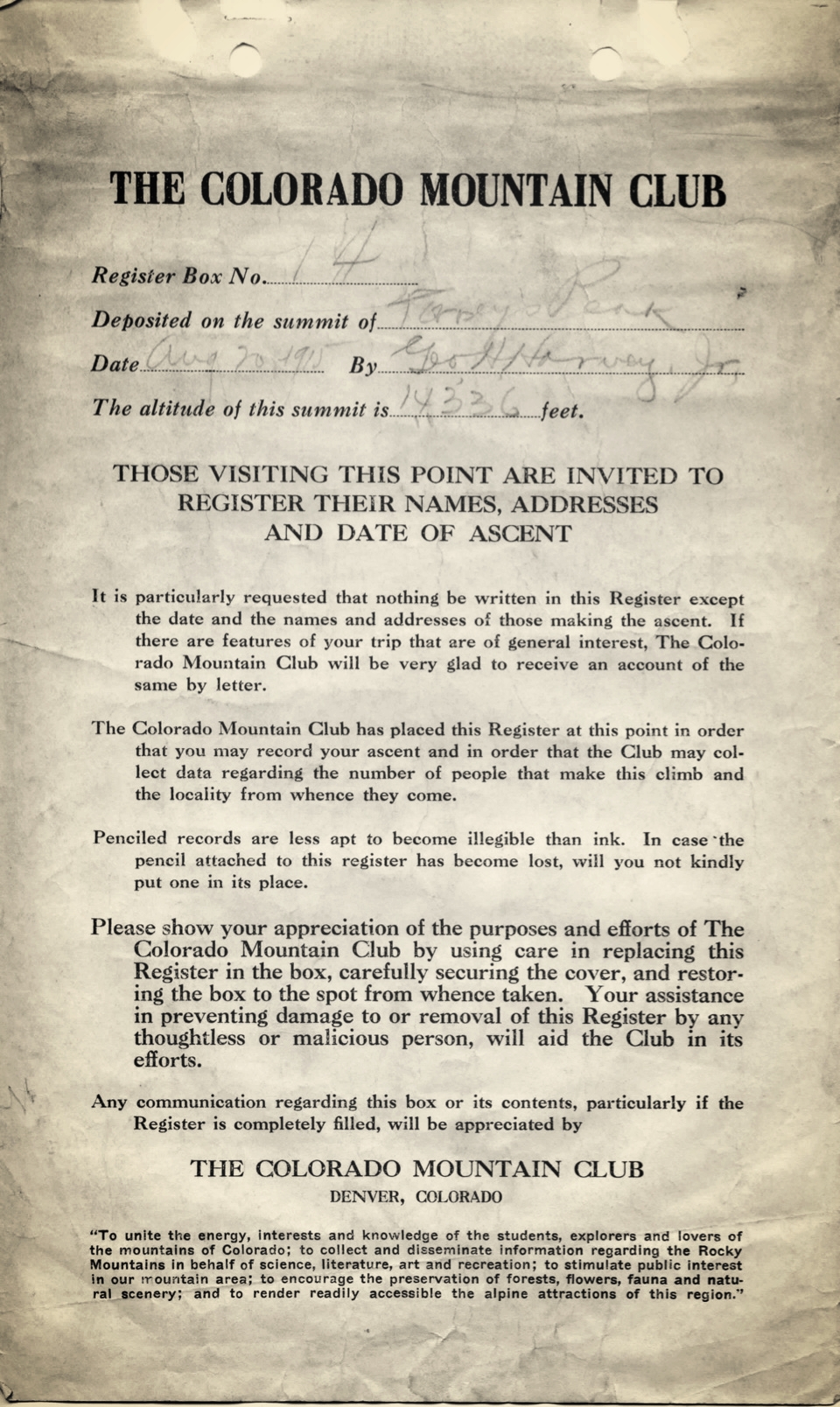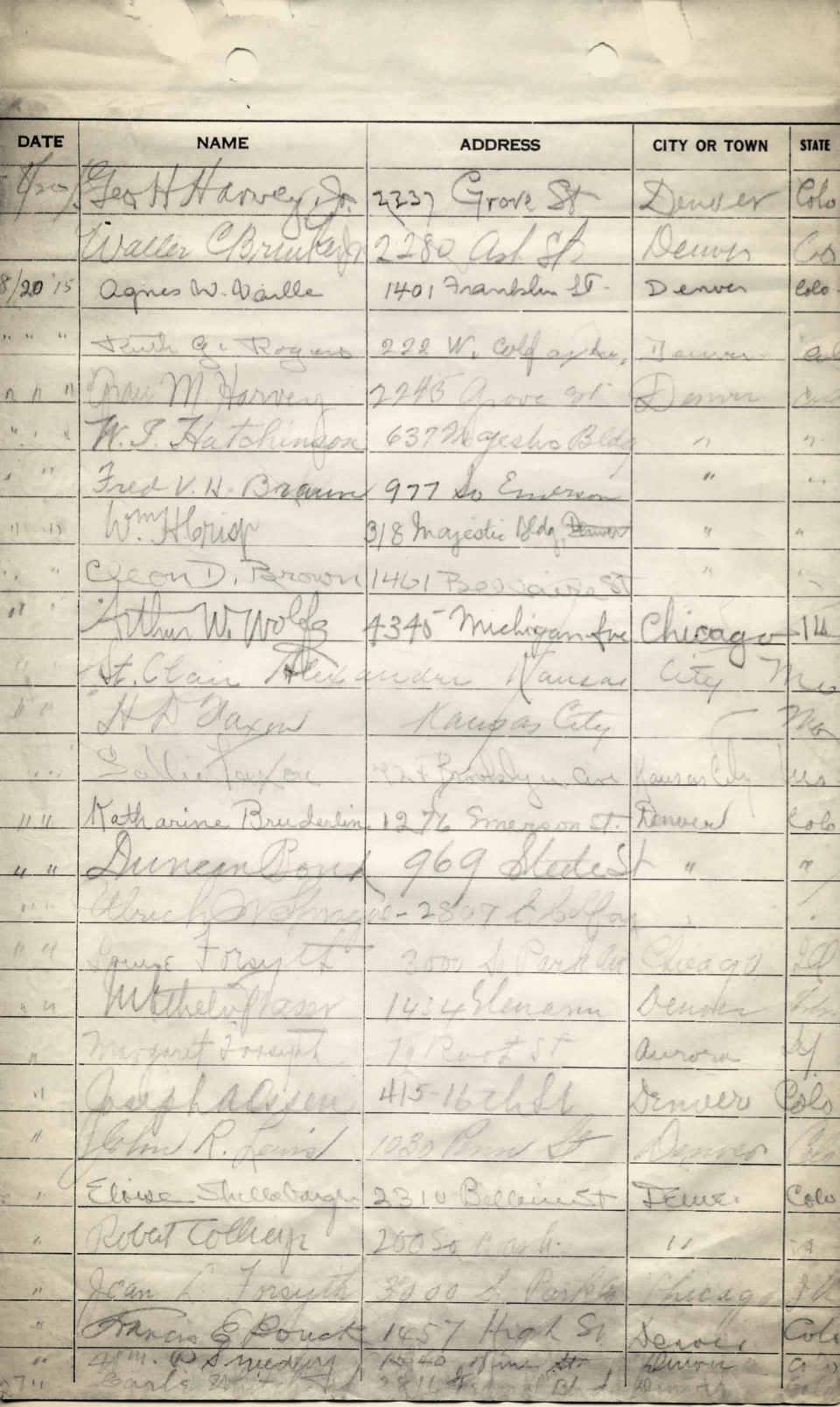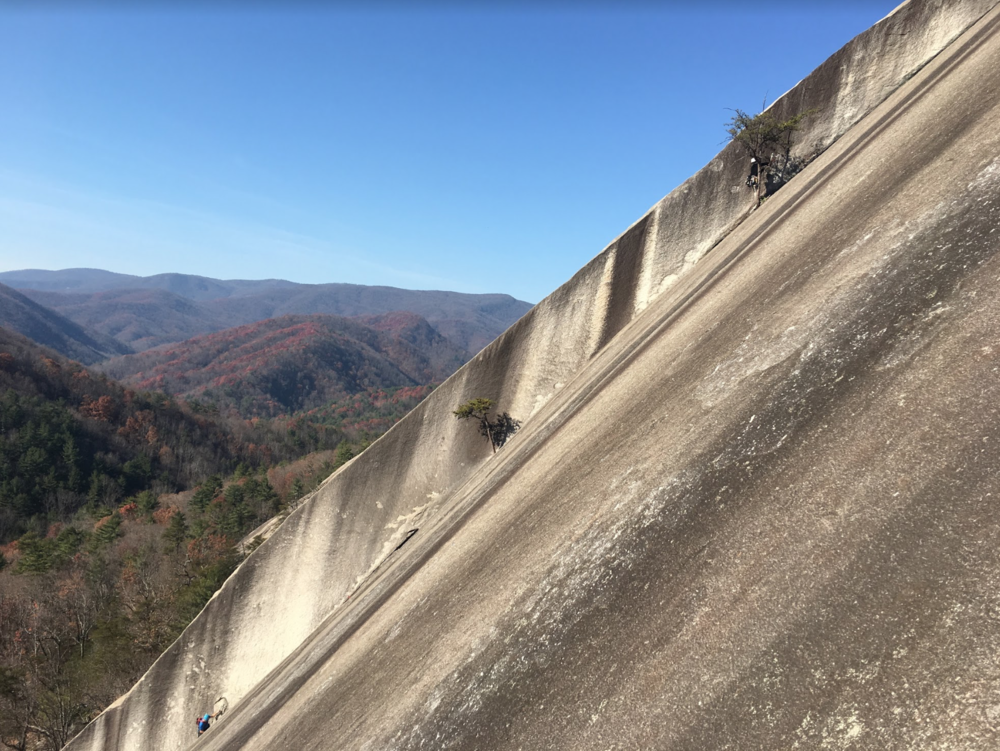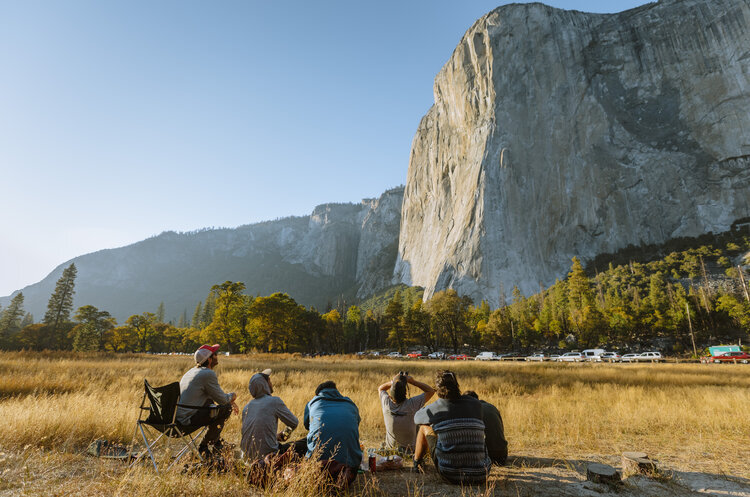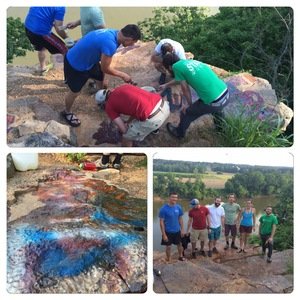Enjoy photos from the AAC Library’s archives of horses, mules, burros and dogsled teams hauling expedition supplies and gear to campsites.
AAC is Accepting 2019 World Cup Ice Climbing Team Applications
As a Member Federation to the UIAA, the American Alpine Club is responsible for selecting the 2019 USA World Cup Ice Climbing Team.
Athletes interested in competing in any of the Ice Climbing World Cup & World Championship events must complete the google form application by 11:59pm MST on September 25, 2018.
The American Alpine Club will make their selections and athletes will be notified by October 5.
2019 World Cup Ice Climbing Team Selection
As a Member Federation to the UIAA, the American Alpine Club is responsible for selecting the 2019 USA World Cup Ice Climbing Team.
Athletes interested in competing in any of the Ice Climbing World Cup & World Championship events must complete the google form application by 11:59pm MST on September 25, 2018.
The American Alpine Club will make their selections and athletes will be notified by October 5.
USA World Cup Team Selection:
The USA can send up to 8 men and 8 women in each of Difficulty (Lead) and Speed to each World Cup event, including the Denver World Cup in 2019. For World Championship events the quota is 3 men and 3 women.
As the future of Ice Climbing competition is headed toward combined difficulty and speed events, priority will be given to athletes who compete in both.
Since we are working to develop a team, priority will be given to athletes who are competing in more than one World Cup event, and who plan to compete in future years.
Athletes must turn 16 or older before the end of 2019 (born 2003 or later).
We encourage people who are experienced competitors in any form of climbing to apply.
6 spots per gender will be selected based on the following performance criteria:
National ranking from the 2018 season (top 2 spots are guaranteed participation)
Highest rankings in each of the categories (Difficulty and Speed) from the 2016, 2017 and 2018 World Cup seasons
Ranking in previous non-World Cup competitions (e.g. Ouray, Bozeman, Michigan Ice Festivals)
Number of World Cup competitions you are applying to compete in during the 2019 season
Competition experience in any form of climbing
2 Development spots per gender will be selected based on the following criteria:
Historical competition participation
Number of competitions you are applying to compete in during the 2019 season
Current training plan
Competition experience in any form of climbing
National ranking from the 2018 season
In the event that participants are only competing in either Speed or Difficulty (and not both) the AAC will select enough athletes to be able to field a team consisting of 8 men and 8 women for the Speed portion and 8 men and 8 women for the Difficulty portion.
In the event that there are not 6 performance or 2 developmental applicants that are qualified to participate at the international level, the allocation numbers will be adjusted.
2019 World Cup Ice Climbing Finals in Denver
February 22-24, 2019
Civic Center Park, Denver
The American Alpine Club is hosting the USA World Cup Ice Climbing Finals in Denver. This event is free and open to the public to attend and watch over 120 athletes from over 20 countries compete in Lead and Speed competitions.
At-A-Glance
Friday, February 22: Athlete Registration, Opening Ceremony, Dinner
Saturday, February 23: Speed Climbing Qualifying & Semi-Finals, Lead Qualifying
Sunday, February 24: Speed Finals, Lead Finals, Award Ceremony, Ticketed VIP Party
Athletes interested in competing in this, or any World Cup competition must fill out an application by September 25 by midnight MST.
Information and the application can be found here.
2019 World Cup Schedule
January 11-13 South Korea
January 18-20 China
January 24-26 Switzerland
February 1-3 Italy
February 8-10 France
February 22-24 USA
AAC Responds to the Sexual Harassment Survey
This past summer we helped launch a survey to better understand the results of sexual harassment and sexual assault (SHSA) in climbing. Over 5,000 climbers took the survey around the world and the results are staggering.
About 40% of women and 9% of men answered “yes” to the question “Have you experienced SHSA while engaged in a climbing activity?”
The survey also asked about more specific behaviors: have respondents experienced specific types of SHSA (e.g., unwanted touching, forced kissing, etc.). These more detailed questions revealed that 47% of women and 16% of men have experienced interactions that could be classified as SHSA while engaged in a climbing activity, even if they do not report it as such.
Looking at data from the United States alone, the numbers are similar in range as the global data:
42% of US women and 9% of US men answered “yes” to the question “Have you experienced SHSA while engaged in a climbing activity?”
50% of US women and 15% of US men reported experiencing behavior that that could be classified as SHSA while engaged in a climbing activity, even if they do not report it as such.
At the American Alpine Club, we know safety means more than a good belay. We strive to maintain a safe and non-hostile work environment for our employees, volunteers, and all participants at AAC events. We also acknowledge that our role as a leader within the climbing community extends our responsibility to promote a safe and harassment-free environment among the entire climbing community.
AAC members and volunteer leaders are expected to serve as role models in the community. American Alpine Club will appropriately screen all staff and volunteer leaders prior to granting leadership positions. Reports of discriminatory and inappropriate behavior will be dealt with swiftly, seriously, and judiciously. Violations of our harassment and assault policy will include discipline up to and including termination of membership or employment at the AAC.
Hear what your Board President Deanne Buck and CEO Phil Powers have to say in an op-ed to Alpinist.
The Secret History of the Ice Axe
Speak Up For LWCF
Photo by AAC member Brian Payst of LWCF-funded climbing area Stone Mountain. “Climbers have already reaped the rewards of the visionaries who established the LWCF and we’re set to see further gains in the future, but we won’t be able to unless it is reauthorized,” Payst writes.
Action alert! The Land and Water Conservation Fund (LWCF) provides funding dedicated to the protection of national treasures, and has been used to purchase and improve some of our most beloved crags. Without timely action from Congress, this extremely important bipartisan program will expire September 30th. Learn more, then take action!
United we climb.
Packs for Public Lands
AAC has joined forces with Cotopaxi and Utah-based artist Samantha Zim to create limited edition packs!
The packs feature side panels with custom art inspired by the Utah desert.
The Cotopaxi Luzon Del Día also features a top drawstring closure, front zippered pocket, ultralight mesh shoulder straps, large main compartment, internal hydration sleeve, and lightweight ripstop nylon shell fabric. The pack is available in two colors: blue & purple.
Proceeds from the sales of these packs will support AAC's Policy & Conservation Program. We only created 600 of these; get yours before they're gone!
The Colorado Mountains: View from the Archives
Atop Mount Audubon, circa 1916-18.
Now more accessible than ever! Thanks to a grant from the Colorado Historical Records Advisory Board, we were able to process and digitize a portion of the Colorado Mountain Club Archives.
Located in the American Mountaineering Center, the Colorado Mountain Club (CMC) Archives are maintained by the staff of the American Alpine Club (AAC) Library. From April 2017 to May 2018, with a dedicated group of enthusiastic CMC & AAC volunteers, we organized, inventoried, rehoused, and digitized much of this collection. The most painful part was organizing the huge duplicate collection of Trail & Timberline back issues and flattening summit registers. Interested in purchasing back issues of the T&T? Contact us at [email protected]. Proceeds will go towards archives maintenance.
What's in the Colorado Mountain Club Archives?
The archives date back to before the founding of the Colorado Mountain Club in 1912. There are trip reports, photographs, lantern slides, scrapbooks, old gear, 'Save the Wildflowers' posters, and much more. Currently, most of the early trip reports (over 1,150) have been digitized and eight photo scrapbooks. We are gradually adding them to our Digital Collections website. As we create and catalog finding aids, you can find them in our catalog here.
Putting It All Together
Having all of these records inventoried and cataloged makes it so much easier for researchers to find information. For example, you can now find photographs from the 1915 Clear Creek Outing on our Digital Collections website, with a selection seen below.
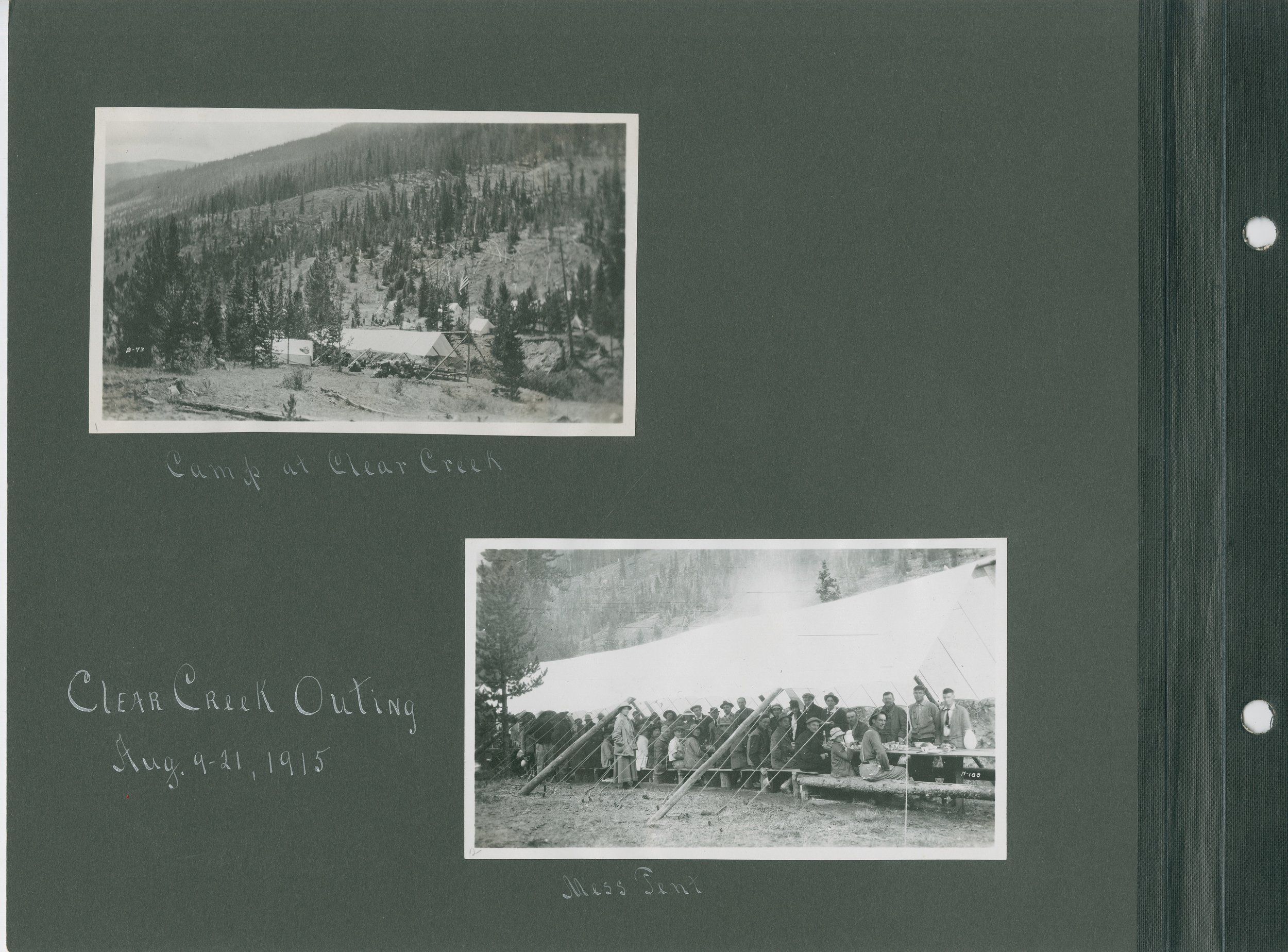
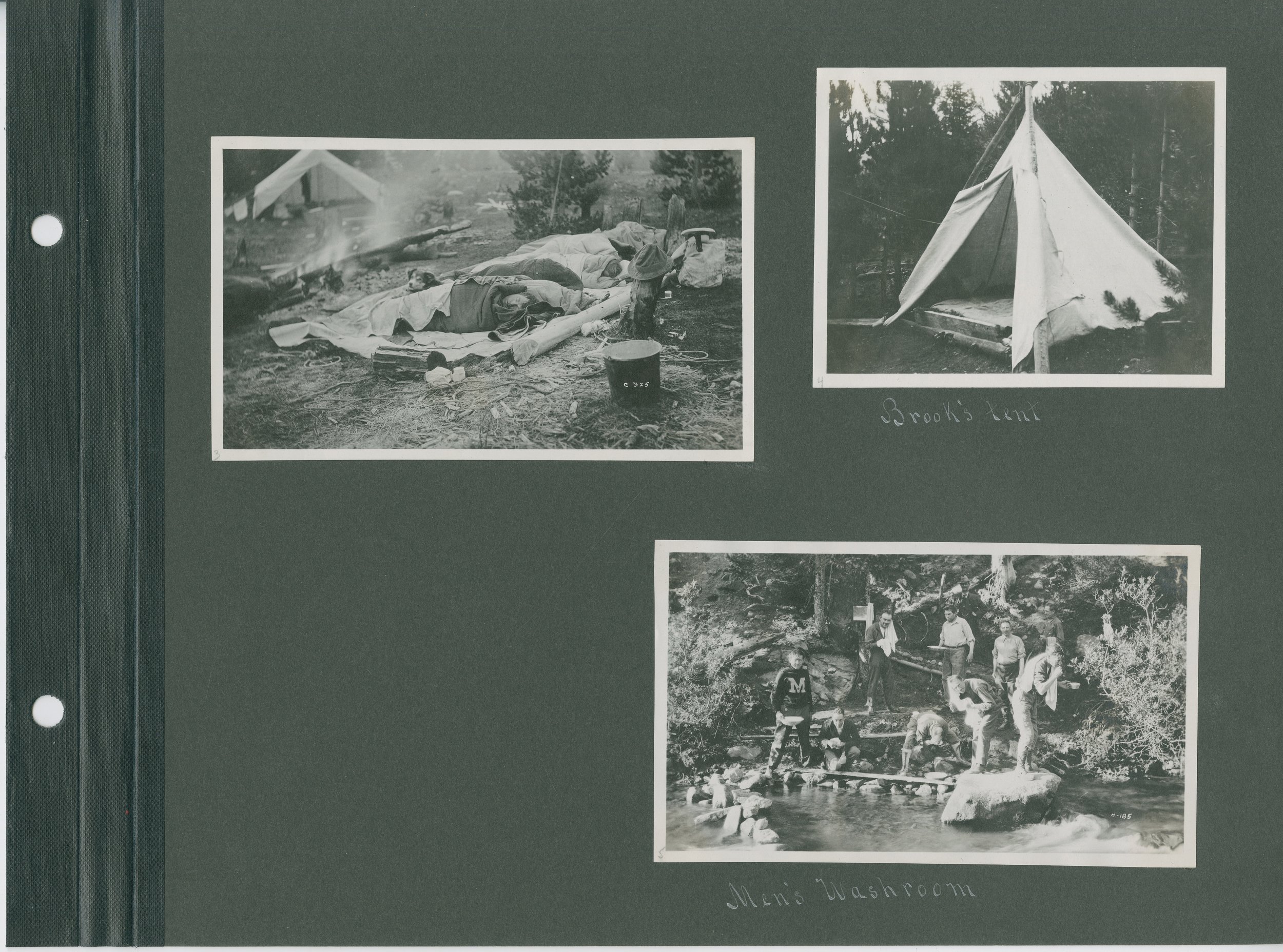
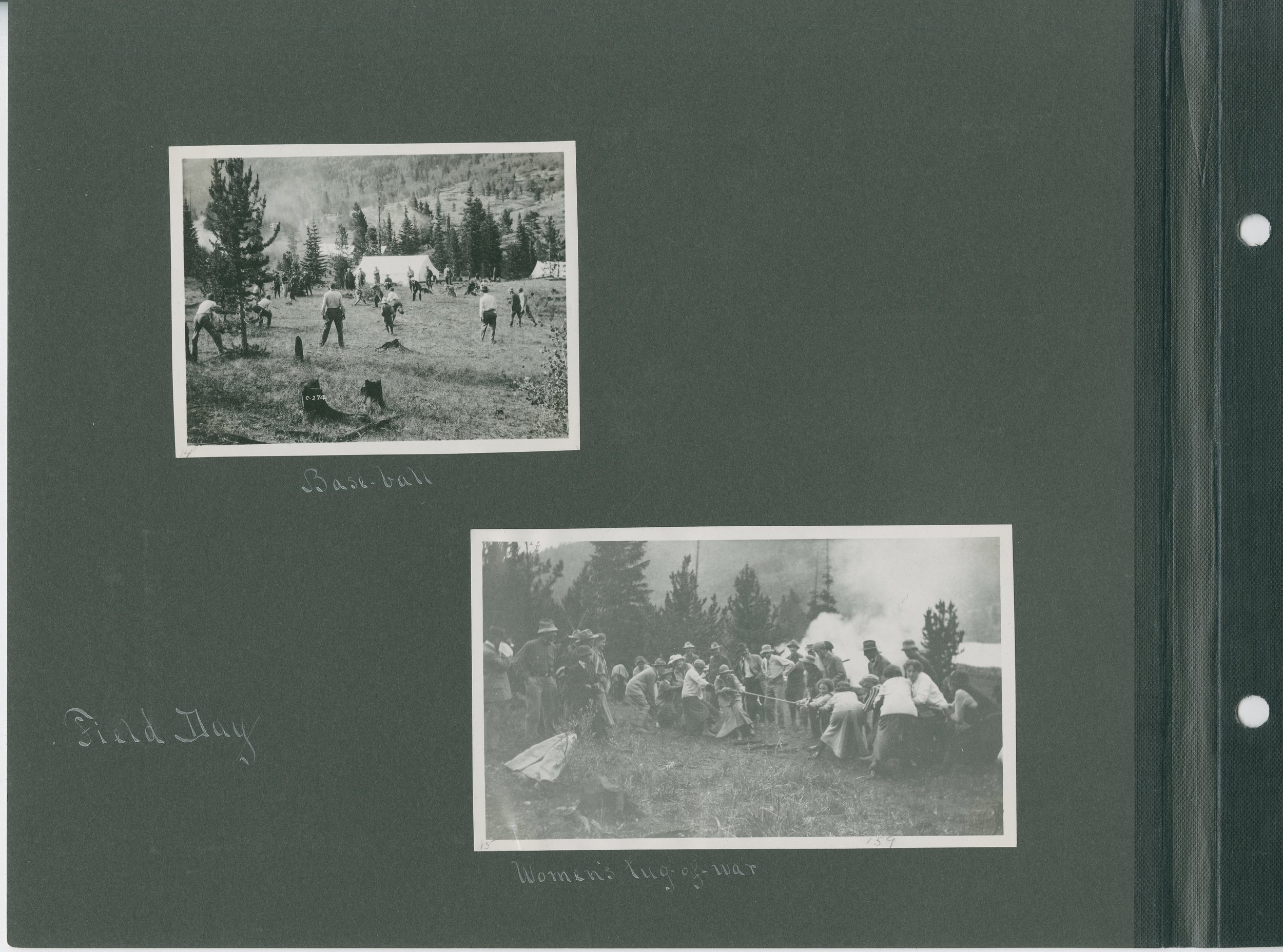
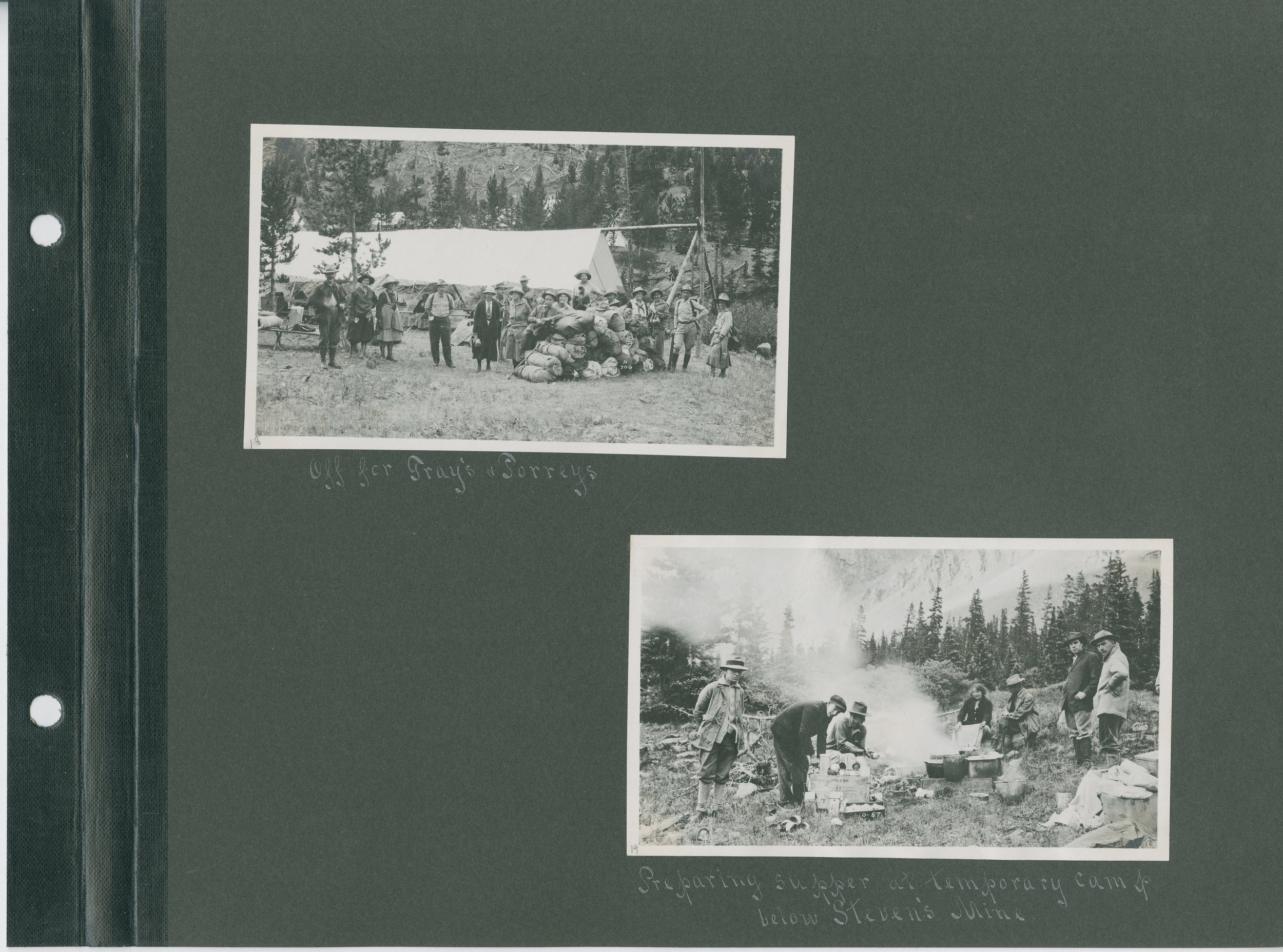

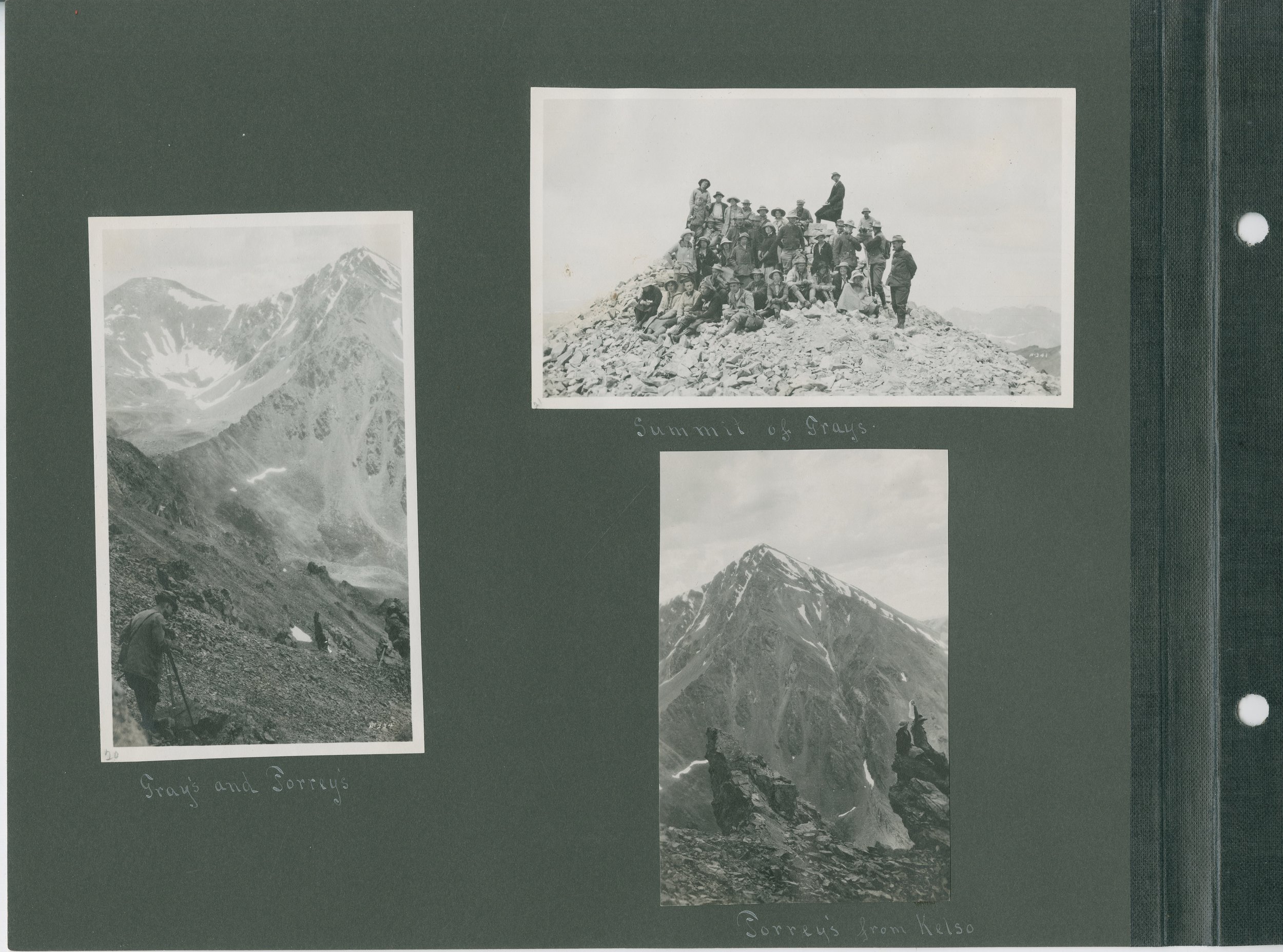
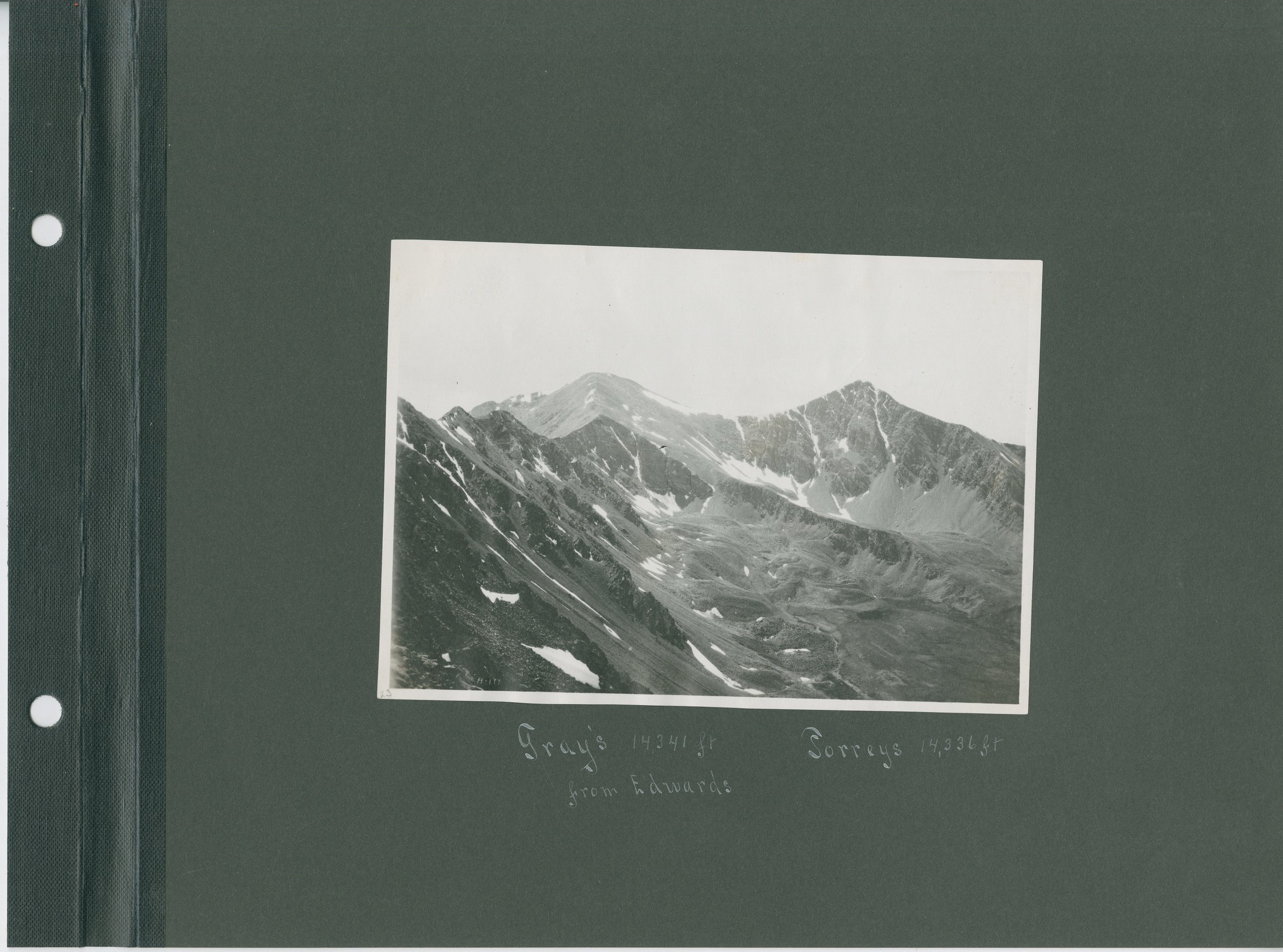
By searching the inventories, you can pair those photographs with the Song Book written by the Club members, the Grays and Torreys trip report and the summit registers that were signed by the CMCers when they climbed Grays and Torreys on August 20, 1915.


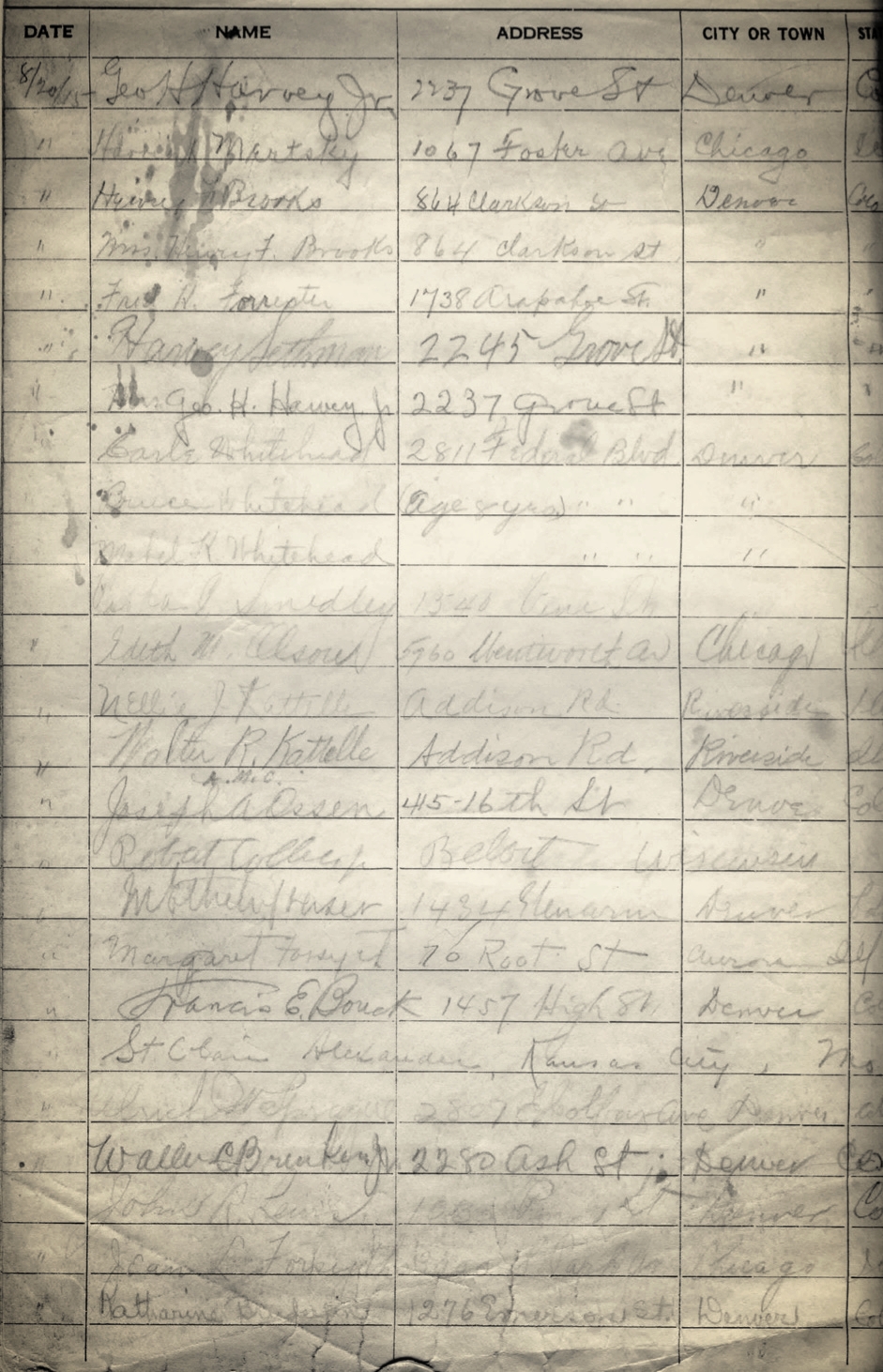
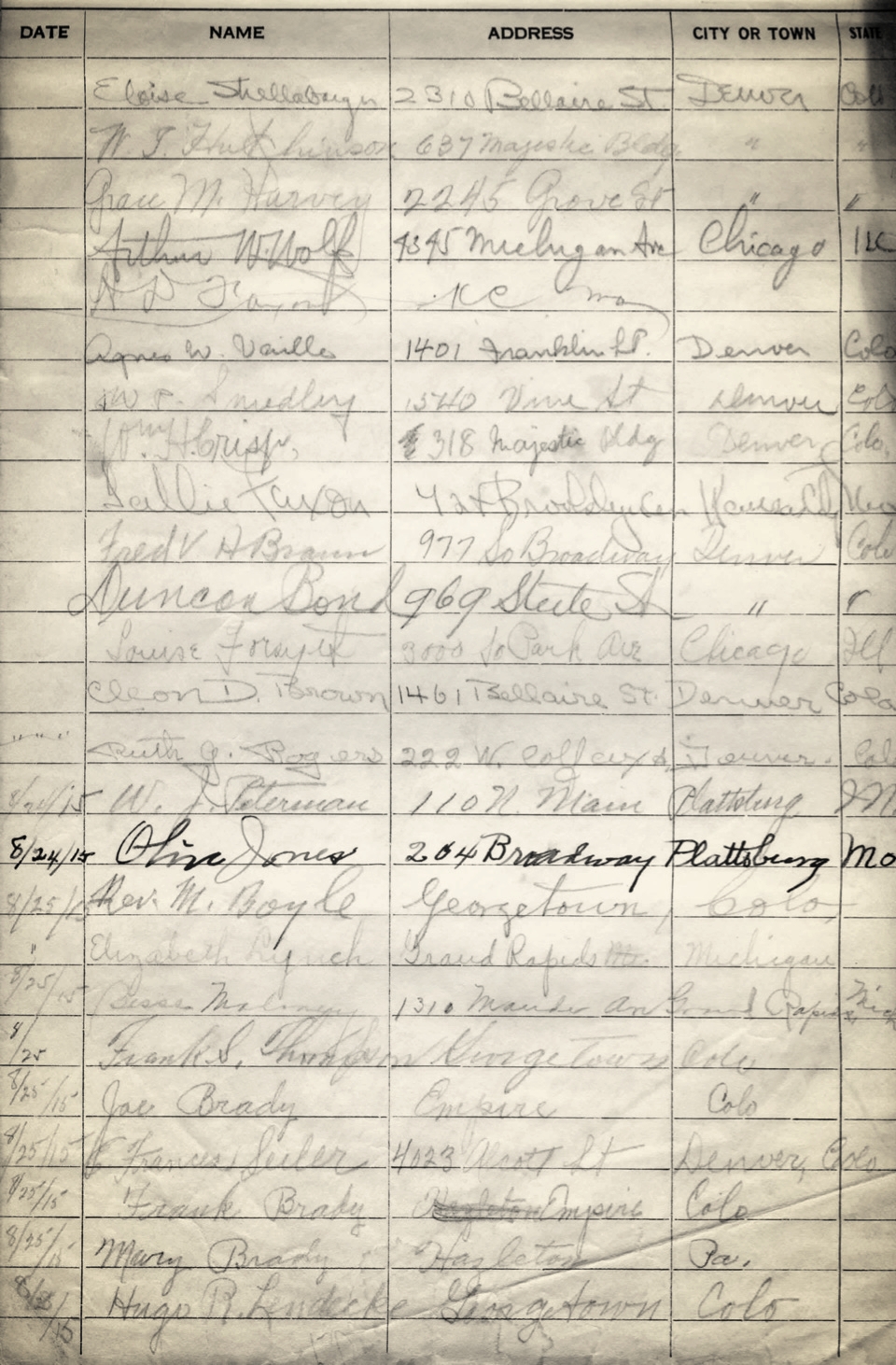

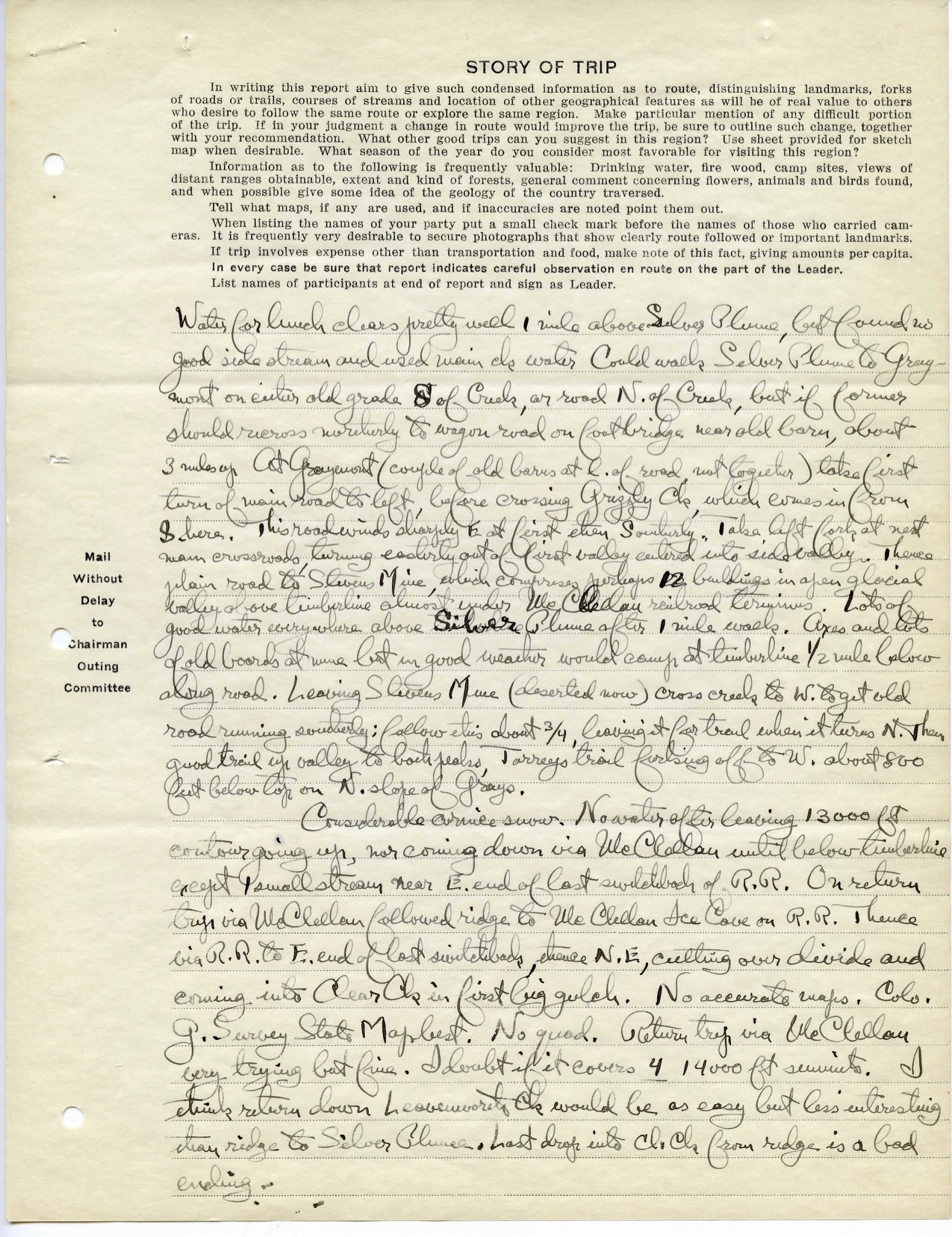
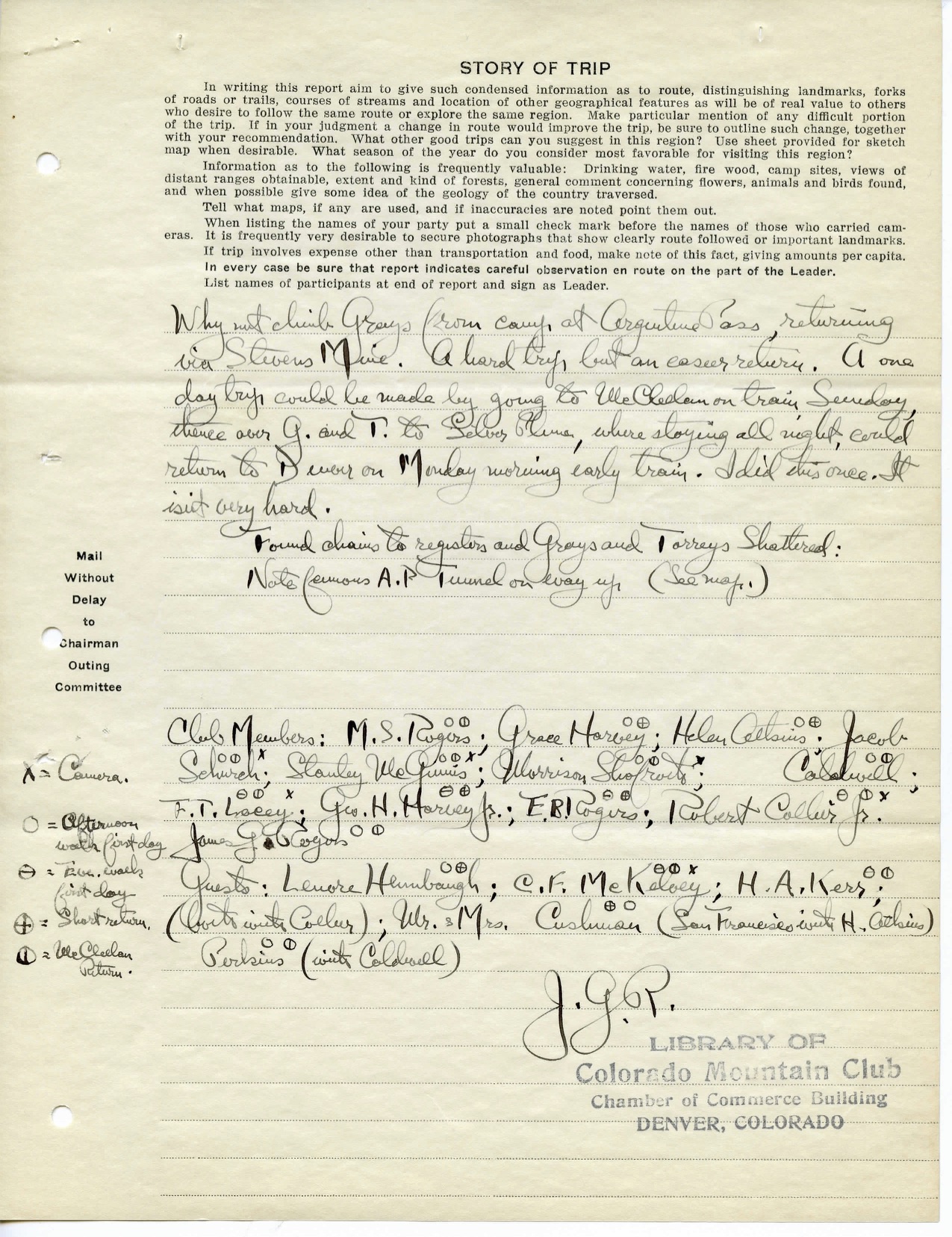
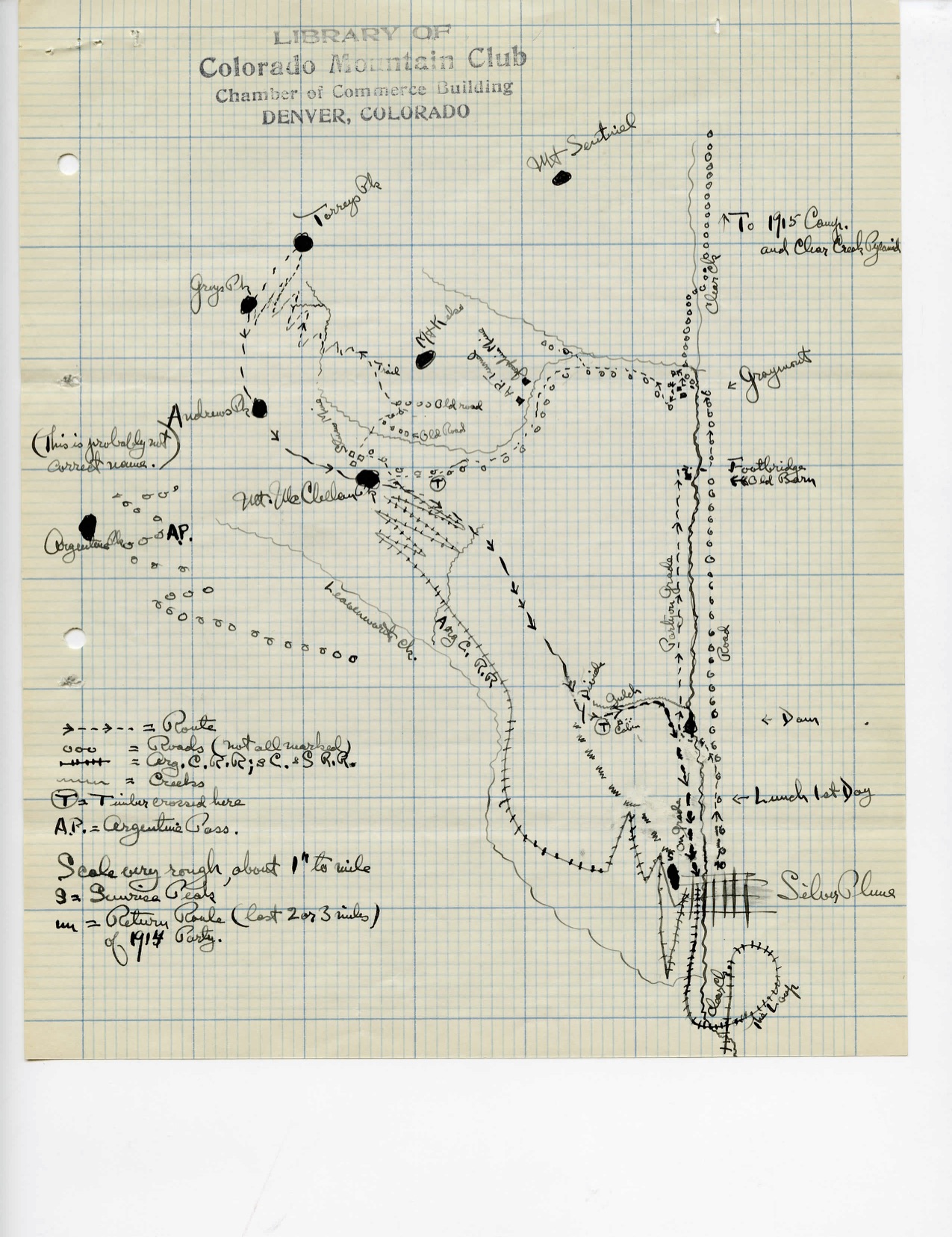
There are many more great records. Feel free to drop by the library and take a look. Keep an eye on our Digital Collections website as we are constantly adding more photographs and records.
This project was supported in part by an award from the Colorado Historical Records Advisory Board, through funding from the National Historical Publications and Records Commission (NHPRC), National Archives Records Administration. This project would not have been possible without the volunteers that inventoried, sorted, boxed, re-foldered, and scanned. Many thanks to Donna Anderson, Karyn Bocko, Dan Cohen, RoseMary Glista, Ann Hudgins, Peter Hunkar, Mike Lovette, Jan Martel, Barbara Munson, Roxy Rogers De Sole, Linda Rogers, Lin Wareham-Morris and Pat Yingst.
The 2018 Guidebook to Membership is Here!
The 2018 Guidebook to Membership is here! The Guidebook is our Club’s collective yearbook. This year’s issue, “the changing faces of the AAC”, features stories and photos by some incredible changemakers in our community as well as information about AAC programs and opportunities. We hope you find it inspiring and informative! If you’ve opted to receive our print publications, you should see it in your mailbox any day now. You can also view the Guidebook online.
Cover photo by Austin Siadak.
AAC's Peter Metcalf on Senator Mike Lee's Anti-Public Lands Ideology
Read AAC's policy committee member Peter Metcalf's opinion piece in the Salt Lake Tribune.
"Ours is not a story of moneyed elites demanding rural oppression. It is the opposite. It is all of us coming together to protect access, enjoy, and profit off our shared lands and their natural features and resources. This is Utah’s story."
Our 2017 Fiscal Year: the Annual Report
"When I took the helm at the AAC in 2005, we looked inward and asked: who do we represent? Who do we want to be in the future? The answer came back consistently: we want to be the Club for all climbers," writes Phil Powers, AAC CEO.
Learn more about who we are in our 2017 Annual Report:
Happy Anniversary, Gasherbrum I First Ascent!
by Eric Rueth
60 years ago today, Peter Schoening and Andy Kauffman topped a rounding ridge and had nowhere higher to go. After eight hours of climbing they found themselves on the summit of Gasherbrum I and became the only Americans to make a first ascent of an 8,000-meter peak.
"On July 4 all five os us started for Camp V which we hoped to establish at the 24,000-foot col between the south summit and the main peak" (Schoening, 1959).
To celebrate the ascent we're sharing some photo's from Andy Kauffman's collection.
To add some context here is the introduction to Pete Schoening's article from the 1959 American Alpine Club Journal and a link to the full article below.
"There is something exciting about expeditions. In part it must be the uncertainty of them. Perhaps this is adventure. But for Hidden Peak there was something even more. It could be the last chance for an American first ascent of an achttausender, and it seems extremely probable that first ascents of the fourteen achttausenders will become forever historically indicative of the mountaineering activity and ability of the various areas in the world.
Whether for adventure or history or whatever other reason, the ascent of Hidden Peak still required a party, permission and assistance from Pakistan, money, equipment, and an effort to carry out the attempt. Nick Clinch was the driving force behind the 1958 American Karakoram Expedition.* He was the "Director" and organizer.
Late in November 1957, Nick received Pakistani approval through the American Embassy in Karachi. From then on events began to occur at an increasing pace. Our freighter would leave New York by the end of March. In the middle of February as the party was being completed, I became a member. Besides Nick and myself, there were Andy Kauffman, Captain S. T. H. Risvi and Captain Mohd Akram of the Pakistan Army, Tom McCormack, Bob Swift, Dr. Tom Nevison, Gil Roberts, and Dick Irvin."
Click here to read the full "Ascent of Hidden Peak" article.


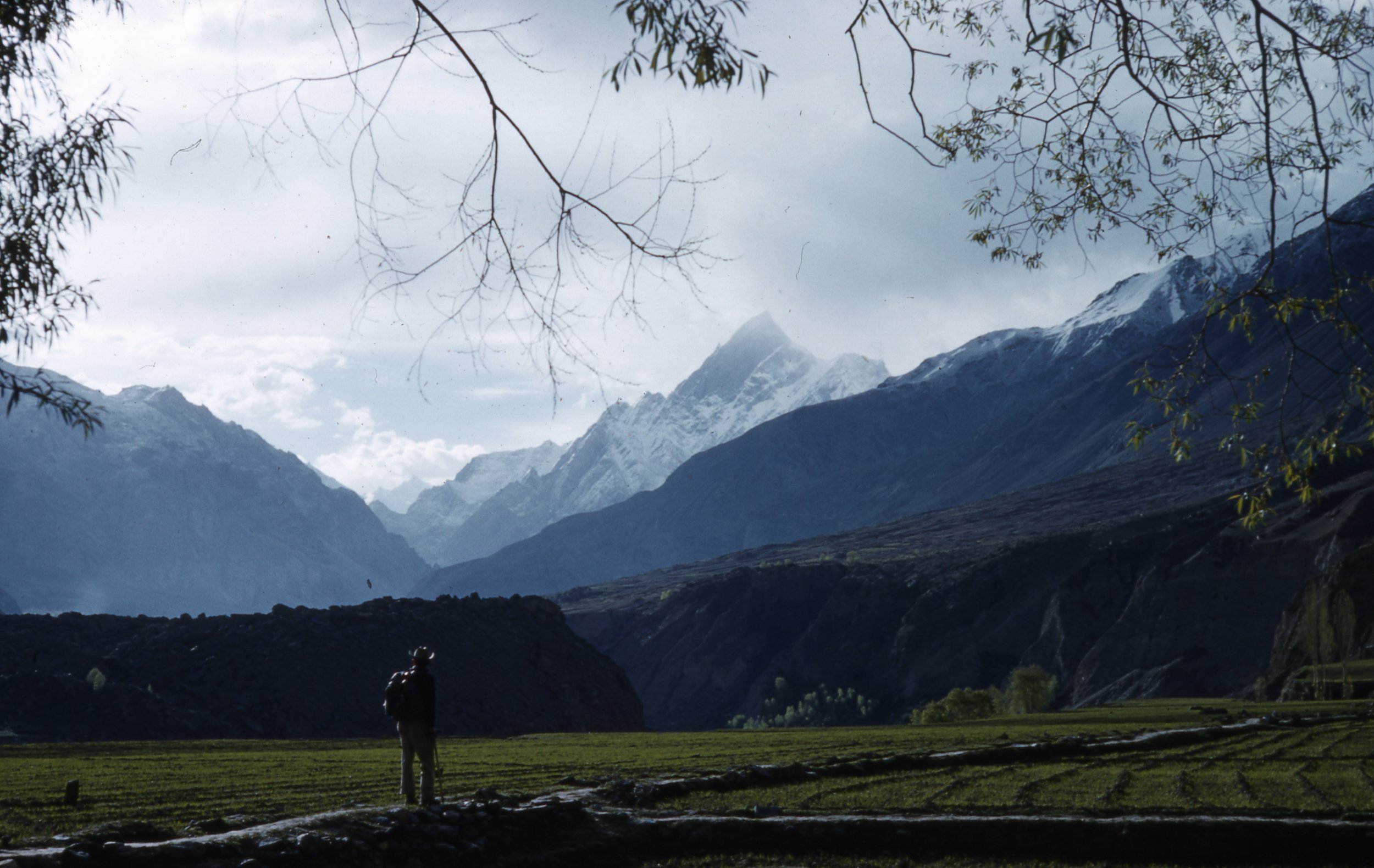
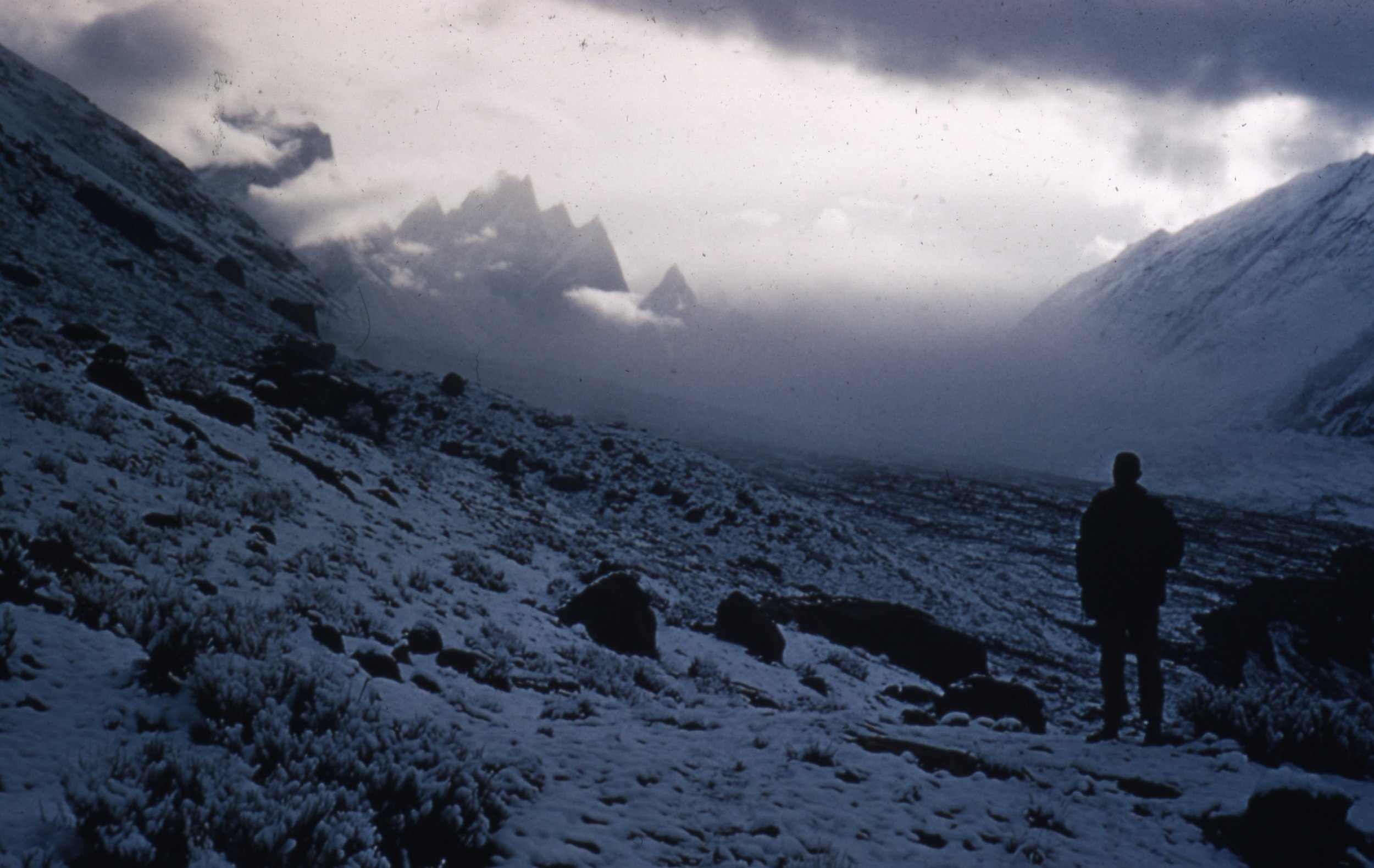
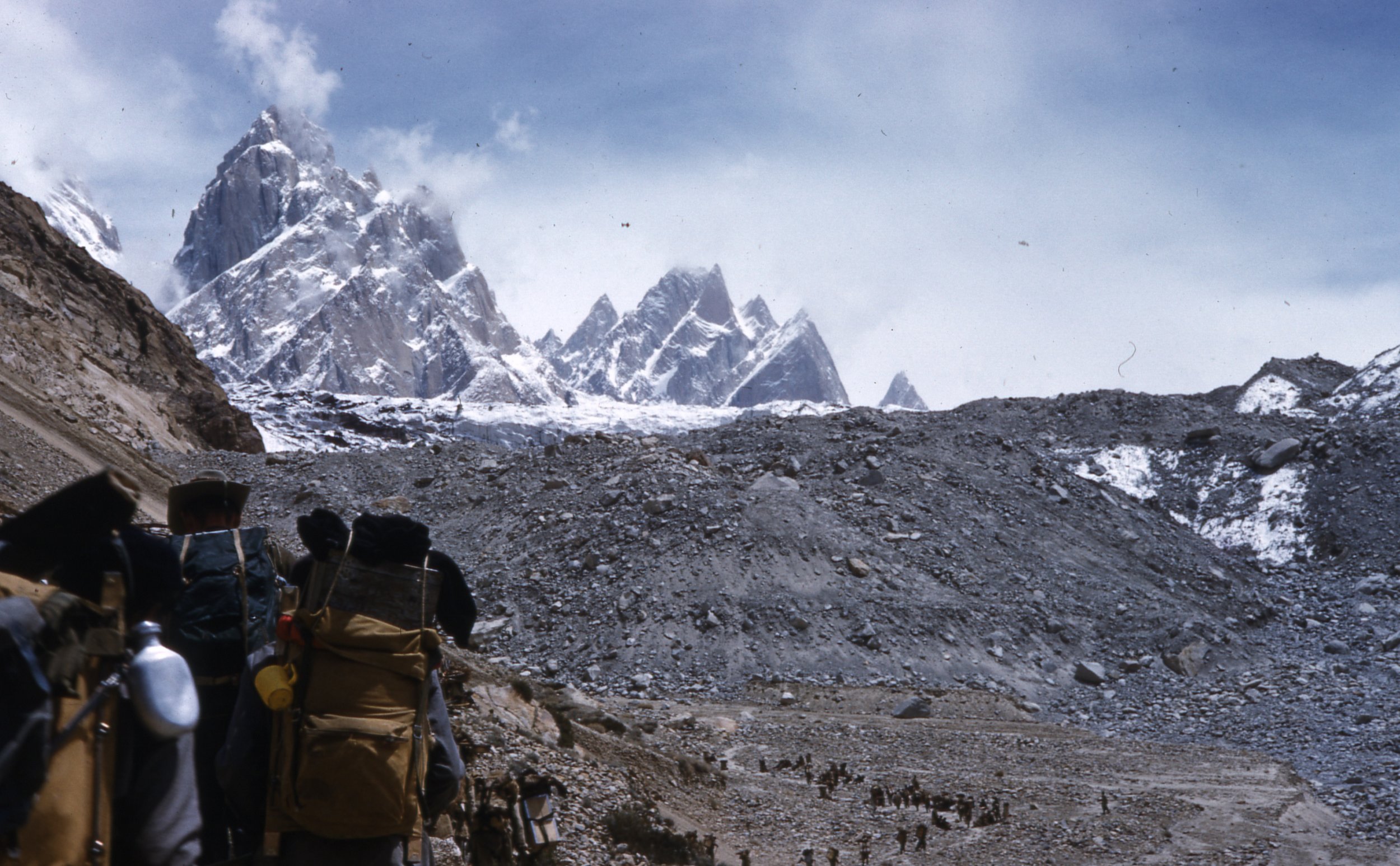

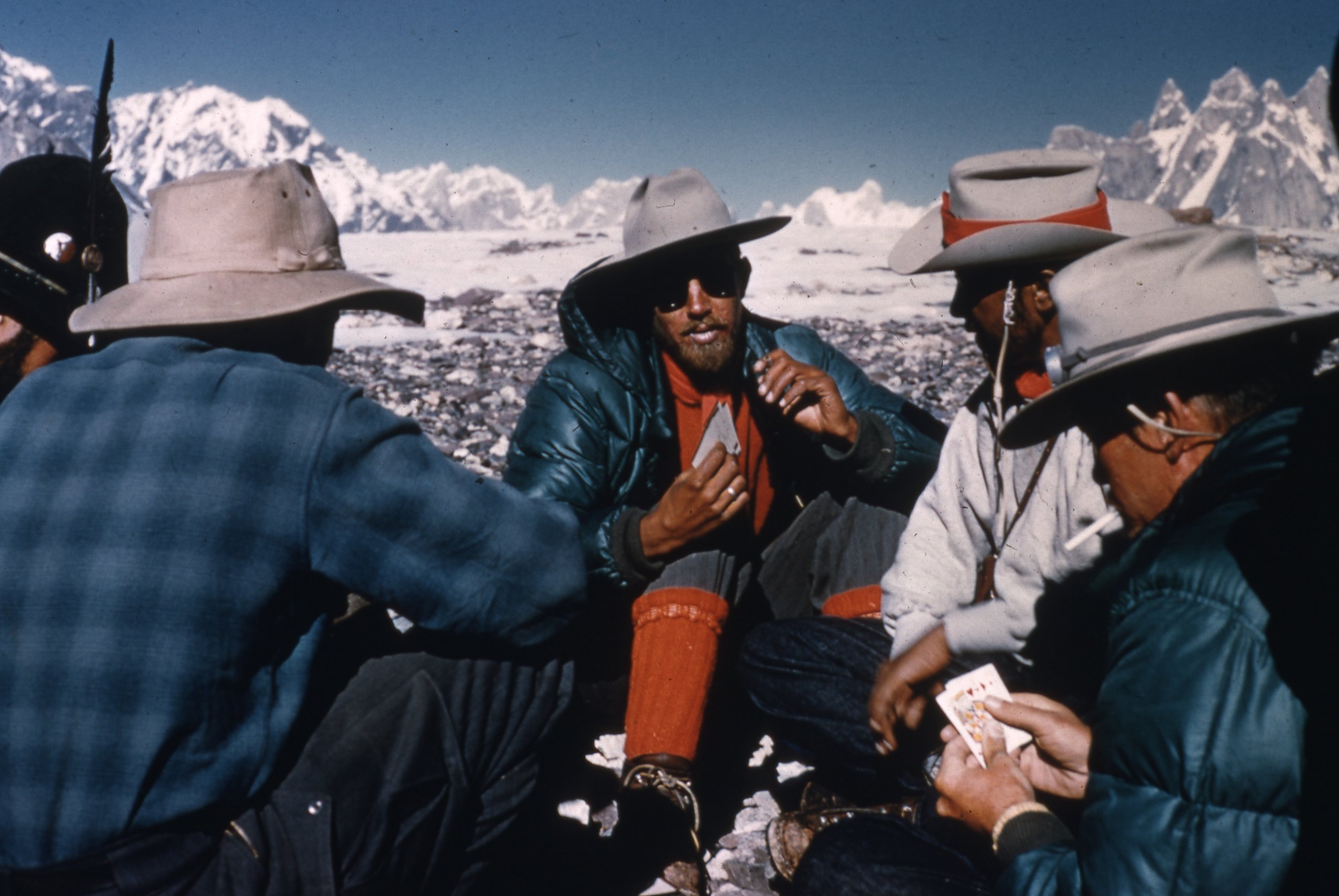
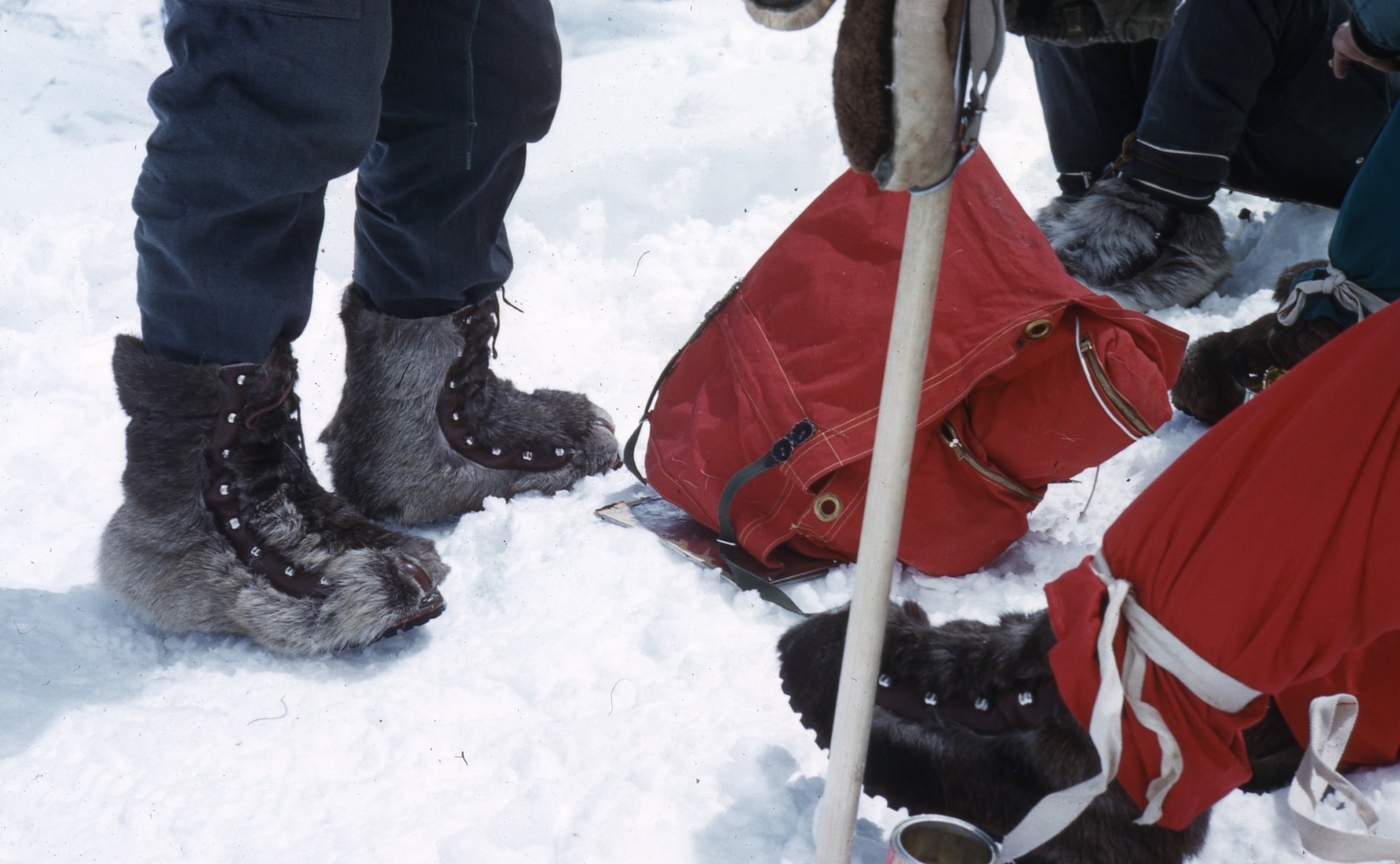
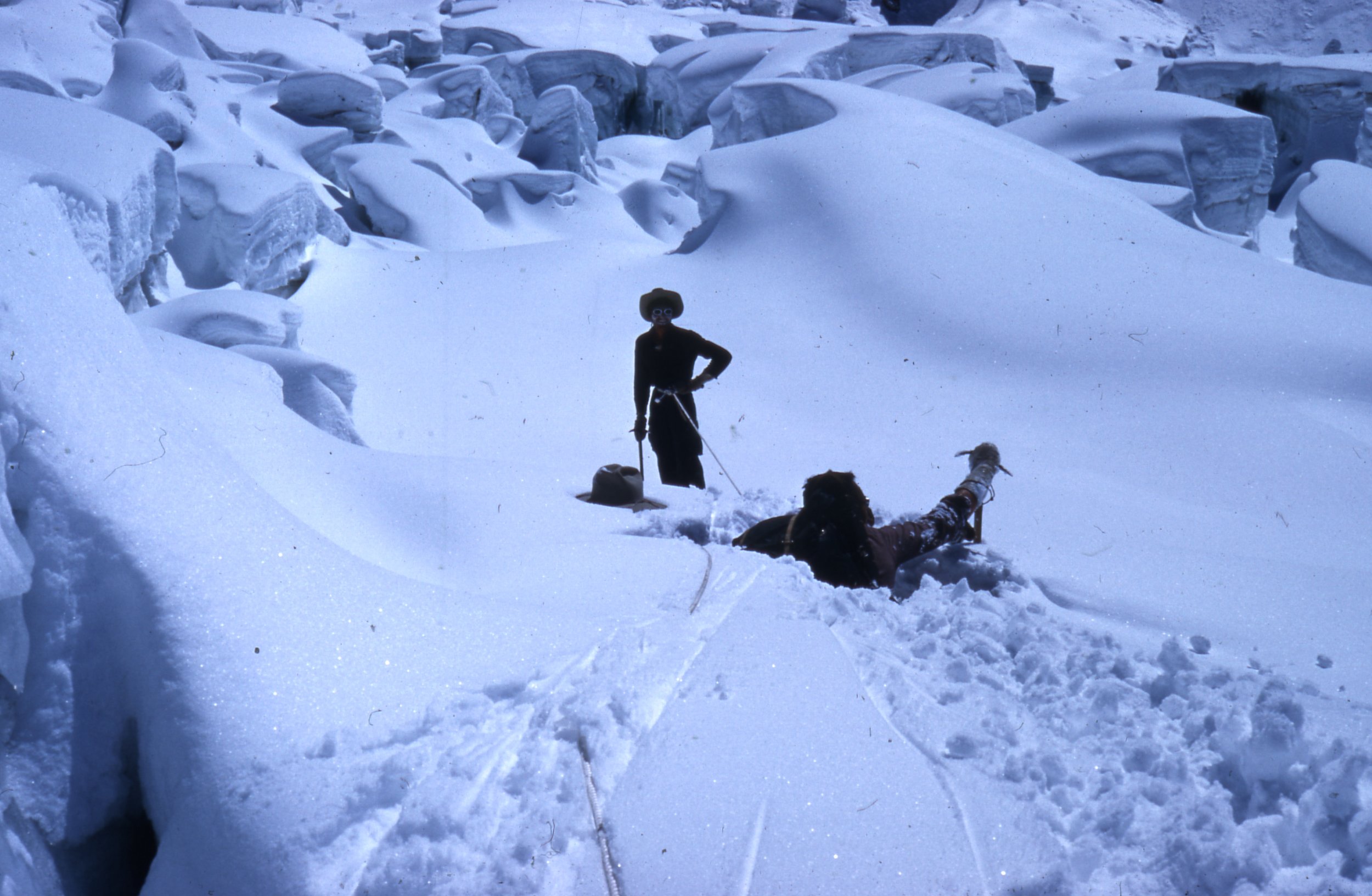
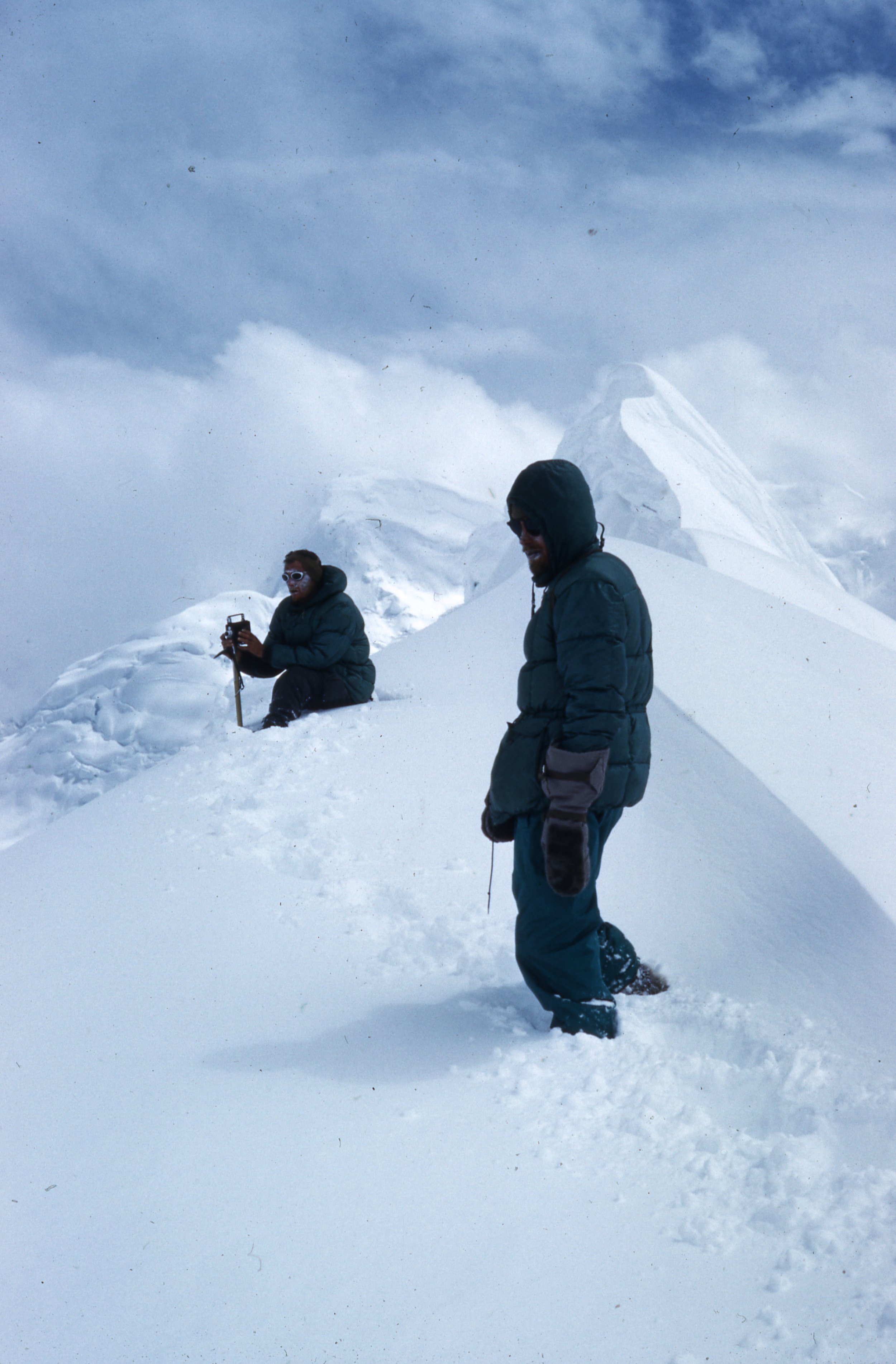
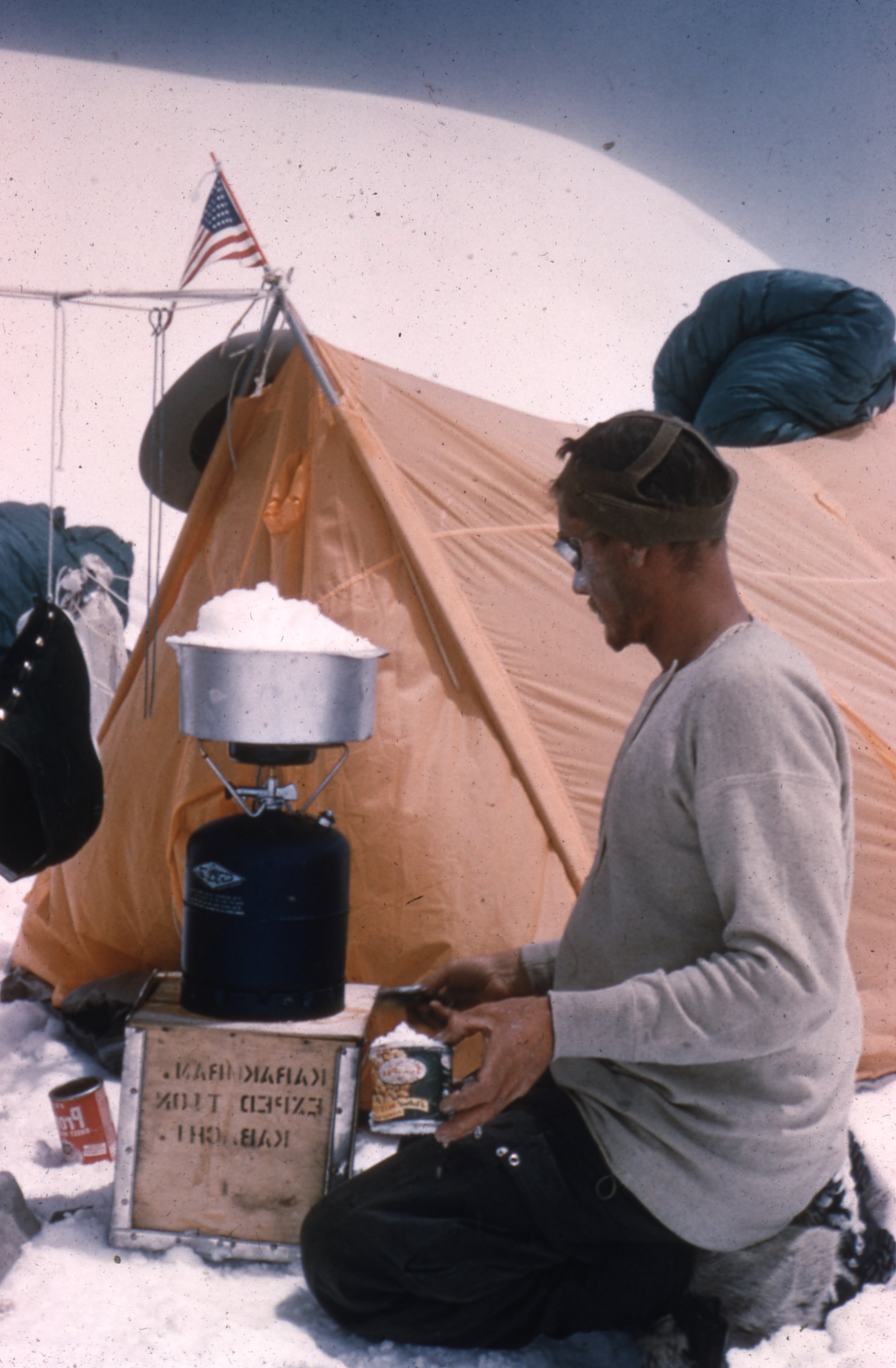
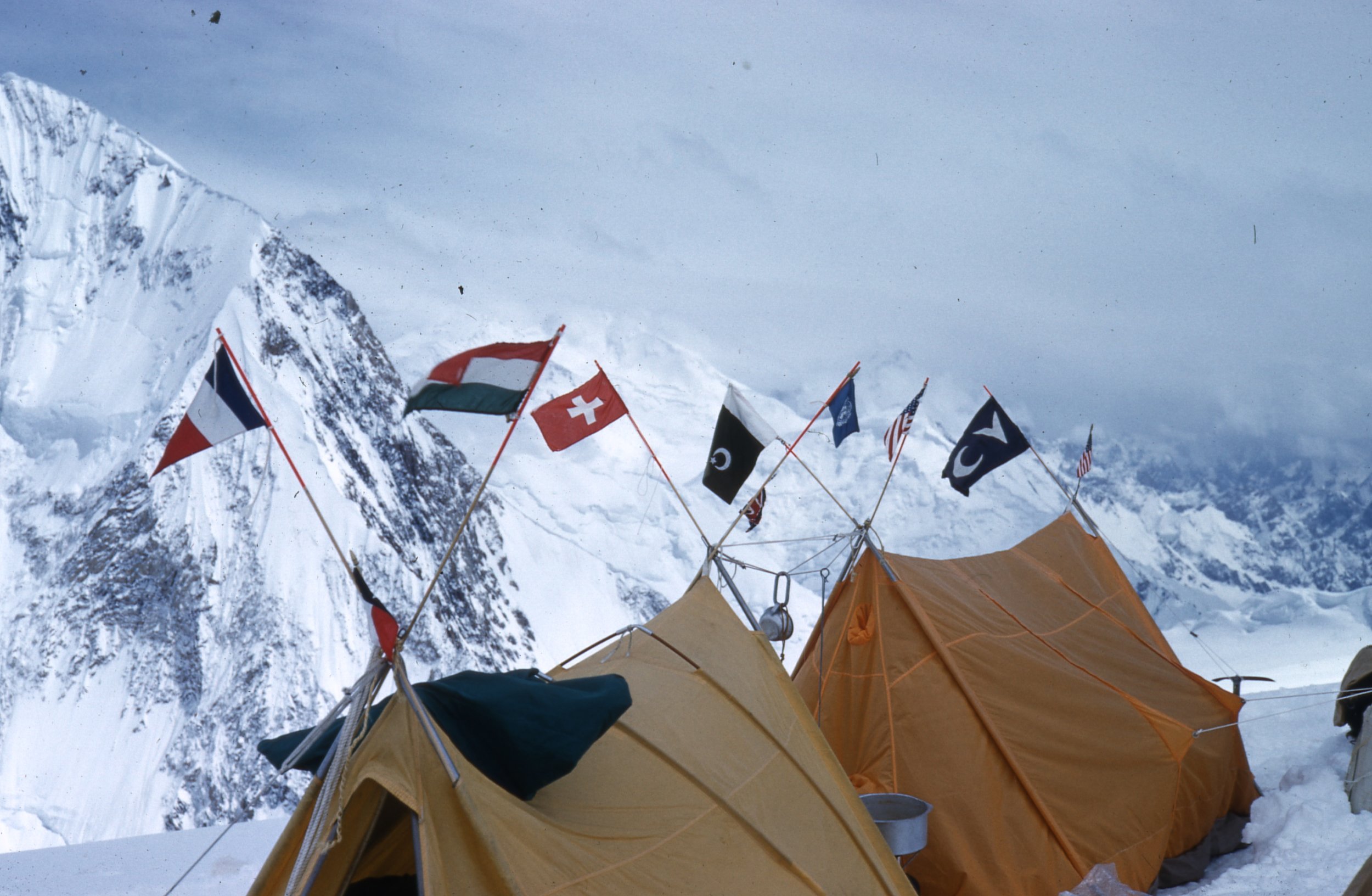
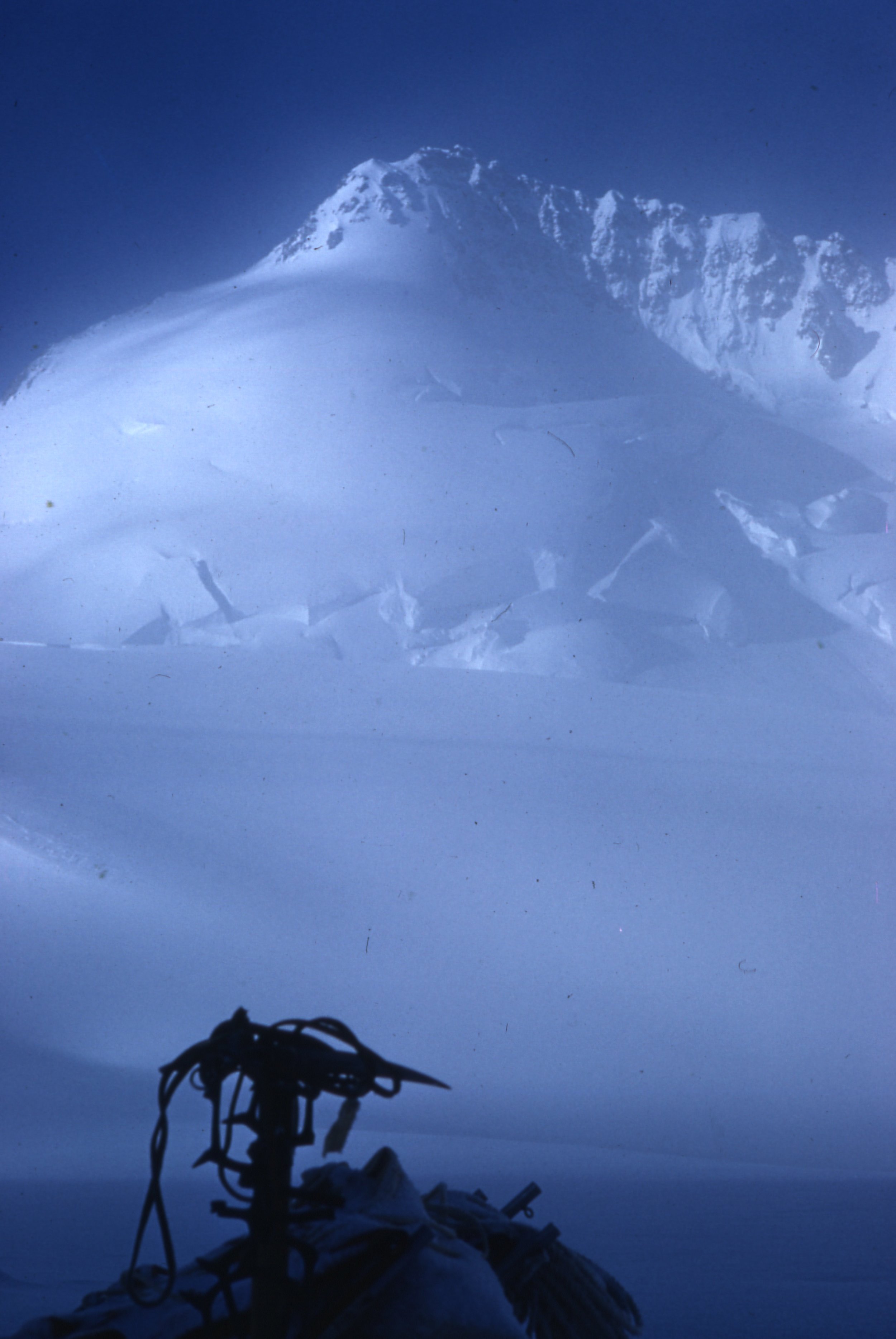
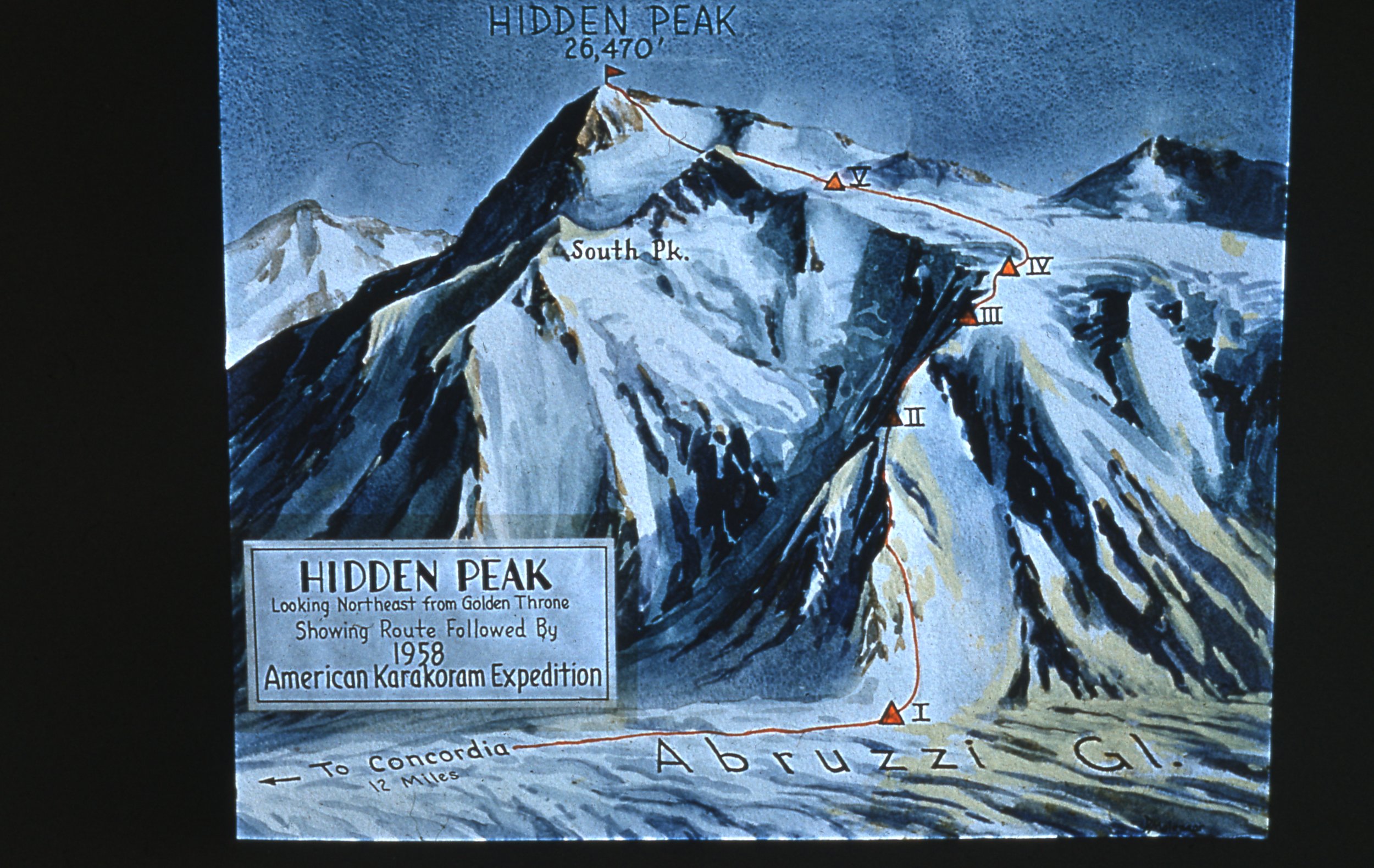
By Eric Rueth
Land & Water Conservation Fund
The Land and Water Conservation Fund (LWCF) is one of our nation’s most successful conservation tools. Created in 1965 from offshore oil and gas royalties, LWCF authorizes $900 million per year for the acquisition of land and water to protect natural treasures, with an emphasis on recreation. LWCF has supported 42,000+ projects to develop parks and outdoor recreation projects in all 50 states.
Without timely action from Congress, this popular, bipartisan program will expire September 30th, 2018. If LWCF is not reauthorized, city urban areas, small local communities, states and national parks could potentially lose many millions of dollars—including those with premier climbing areas.
Please join us in asking members of Congress to support either a stand-alone bill, or an amendment to the FY 2019 Interior appropriations bill, that permanently reauthorizes the Land and Water Conservation Fund before it expires on September 30, 2018.
According to research by Access Fund, LWCF has been used to purchase or improve more than a dozen climbing areas, including:
AAC member Justin Fricke climbs in Chimney Rock State Park, NC. Photo: Adam Fricke
Wilson Peak & Black Canyon of the Gunnison National Park, CO
Seneca Rocks, WV
Bozeman Pass, MT
Castle Crags, CA
Palisades Park, AL
Stone Mountain State Park, Hanging Rock State Park, Pilot Mountain State Park, Chimney Rock State Park & Crowders Mountain State Park, NC
Cumberland Trail State Park, TN
Hueco Tanks State Park, TX
Custer State Park, SD
New River Gorge, WV
Many more... Use this tool to find your home crag!
STORIES FROM LWCF-FUNDED CLIMBING AREAS
"Stone Mountain is known as a premier slab climbing destination. Long run outs on off-vertical terrain characterize the climbing on this beautiful granite dome. Winter days at Stone can lead to climbing in a t-shirt with snow on the ground. Stone is home to many NC climber's first trad leads, such as the 5.5 Great Arch route which splits the South face and climbs a huge right-facing dihedral for 3 pitches to the top of the cliff." -AAC member Brian Payst (photo).
Some of the most popular climbing areas in NC have benefitted from the Land and Water Conservation Fund. Pilot Mountain, Stone Mountain, Chimney Rock and Crowder’s Mountain State Parks all have seen investments from this important fund. Pilot Mountain was one of the first parks in the state to receive LWCF funding, just two years after the fund was created in 1965 and Stone Mountain benefitted just two years later. LWCF funds have supported important acquisitions and expansions at Chimney Rock and Crowder’s Mountain. All of these are popular destinations for climbers.
As climbers, it’s easy to just grab the pack or pad and head for the day’s objective, but that route you’re on or the boulder problem you and your friends are sessioning was touched by the LWCF. We need to rally support for this important program and do everything we can to make sure it is permanently and fully funded. NC climbers have already reaped the rewards of the visionaries who established the LWCF and we’re set to see further gains in the future, but we won’t be able to do it unless it is reauthorized. Many thanks go to NC Senator Richard Burr, who recognizes the value the LWCF has brought to his state and is a leading champion for it in the Senate. However, Senator Burr can’t do this alone and we need your help. If you’ve climbed in NC or just hope to one day, now is the time to get behind the LWCF.
– AAC member Brian Payst, President of the Carolina Climbers Coalition
"Rumbling Bald at Chimney Rock State Park is home to over 400 routes and close to 1,000 boulder problems and is a regional destination in the Fall, Winter and Spring. The Bald also hosts the Carolina Climbers' Coalition's annual Rumble bouldering competition, which draws hundreds of climbers in January of each year. Technical face climbing, crack routes, high quality rock and an amazing diversity of boulder problems draw thousands of climbers in the prime seasons." -AAC member Brian Payst (photo).
[The LWCF-funded crag] Palisades Park, Alabama is the first place I tied into a rope, the first place I learned how to build anchors... the first place I took a lead fall, the first place I learned how to drill top-rope anchors, and the first place I learned to give back to the climbing community by participating in a trail day.
Located about 40 minutes from downtown Birmingham, the park sports dozens of high quality routes throughout the grades.
– AAC member Bob Farley
Photo: Christopher Neal
Like many climbing areas throughout the world, the boulders and cliffs at Rumbling Bald are simply conduits for connection. When I started climbing there in 2010 it was almost always with a group of friends that inevitably grew throughout the day as we met new people. Exploring the thick forest, sprinkled with granite boulders and capped by sheer granite cliffs, cultivated timeless bonds in all of us with people, place, and community. I’m not sure those same bonds would have been possible without that forest and the protection provided to it by the LWCF.
– AAC member Azissa Singh
AAC to Host 2019 UIAA World Cup Ice Climbing Competition in Denver, CO
The AAC is pleased to announce that UIAA World Cup Ice Climbing is coming to Denver, Colorado February 23–24, 2019. The new North American tour stop will serve as the 2018 / 2019 World Cup Ice Climbing Finals in which over 200 athletes from 26 countries around the world will compete for the overall World Cup in both Lead and Speed categories.
The 2019 event is the first time the Ice Climbing World Tour has come to Denver, Colorado. The weekend event will be held in Denver’s Civic Center Park and will be free to the public. The ice climbing competition will take place over two days with qualifying rounds on Sat, Feb 23, and semi-finals and overall finals on Sun, Feb 24.
Golden, CO, June 26, 2018—The American Alpine Club (AAC), America’s oldest and largest non-profit organization for climbers, is pleased to announce that UIAA World Cup Ice Climbing is coming to Denver, Colorado February 23–24, 2019. The new North American tour stop will serve as the 2018 / 2019 World Cup Ice Climbing Finals in which over 200 athletes from 26 countries around the world will compete for the overall World Cup in both Lead and Speed categories.
The 2019 event is the first time the Ice Climbing World Tour has come to Denver, Colorado. The weekend event will be held in Denver’s Civic Center Park and will be free to the public. The ice climbing competition will take place over two days with qualifying rounds on Sat, Feb 23, and semi-finals and overall finals on Sun, Feb 24.
"We are proud to support our U.S. ice climbing athletes and bring this impressive event to downtown Denver," said American Alpine Club CEO, Phil Powers. "Competitive ice climbing is one of the most exciting things I've ever watched; the stamina, skill, and seeming impossibility of it all makes for an outstanding spectator experience. They’re up there doing crazy moves, wielding sharp tools and they hang on forever.”
Competition ice climbing combines formidable over-hanging walls of ice with artful technique and sheer power. In the lead discipline, ice climbers require great technique, tactical mastery and nerves of steel to ascend seemingly improbable icy pillars dozens of feet above the ground. The speed discipline is most closely akin to all out vertical sprint using ice axes and crampons. In 2014, competitive ice climbed debuted as an exhibition sport at the Sochi Winter Olympics. The sport is currently being considered for full-scale Olympic inclusion in the 2022 Winter Games in Beijing .
Luis Benitez, Director of the Colorado Office of Outdoor Recreation Industry and event partner, also commented, “Ice climbing has a strong presence in the culture of outdoor recreation in Colorado. From our world class ice park in Ouray, to our iconic routes in Vail and Rocky Mountain National Park, this is a sport whose time has come. We are thrilled to welcome the World Cup event to Denver in February to highlight just how special ice climbing is and share that feeling with the rest of the country watching!”
The 2019 Denver World Cup Ice Climbing Competition is being hosted by the Golden, CO based American Alpine Club in partnership with the UIAA (International Climbing and Mountaineering Federation and tour organizer), the Civic Center Conservancy, Denver Sports Commission, Visit Denver, Colorado Office of Outdoor Recreation Industry, and the Denver Office of Special Events.
“We’re thrilled to help host this exciting international event in Denver’s historic Civic Center Park and expose this amazing sport to a larger population than ever in North America,” said Scott Robson, Executive Director of the non-profit Civic Center Conservancy, “Civic Center Park is the heart of Denver and has hosted iconic events for over a century. Hosting the 2019 World Cup Ice Climbing finale in such an urban setting will not only make this competition accessible to multitudes of new fans, but will also be visually stunning to watch.”
US athletes who wish to compete at the 2019 Denver World Cup will be able to earn entry at qualifying competitions.
For additional information, including how to become a sponsor, please contact: Vickie Hormuth at [email protected] or visit: americanalpineclub.org/uiaa-federation/
Denver Ice Climbing World Cup Schedule:
Friday, Feb 22
Athlete Registration
Saturday, Feb 23
Lead Qualifiers, Speed Qualifiers
Sunday, Feb 24
Lead Semi-Finals, Lead Finals, Speed Finals, Closing Ceremony, After Party (hosted by the American Alpine Club)
AAC Creates Yosemite Timeline with NativesOutdoors
"Yosemite Valley (Ahwahnee in the language of the Ahwahnechee, who originally inhabited the area) has long been a bastion for American climbing, from the first ascent of the NW Face of Half Dome (Tissaack) to the first free solo of El Cap (Tutocanula). The AAC has been there nearly every step of the complicated (and sometimes dark) way—from guiding the establishment of the park to fighting for climbing as a legitimate use of wilderness in National Parks and advocating for the preservation and 2018 improvements to Camp 4, the iconic climbers' campground."
We've worked with NativesOutdoors to put together this resource for all things Yosemite climbing and history. Check it out below.
Rumney Climbers Association Addresses Human Waste
The rising popularity of climbing and the increasing demand on climbing areas necessitates addressing human waste issues. Rumney receives thousands of visitors every year and improper human waste disposal creates a significant negative impact on the environment and on the user experience. As president of the Rumney Climbers Association (RCA), Rose Kenny sought to find a long-term waste management strategy to:
Improve sanitary conditions
Reduce the impact of human waste on the climbing and hiking experience
Educate users about human impacts on backcountry areas.
Thus, the RCA’s Clean Waste Program was born. In collaboration with the White Mountain National Forest and supported by the AAC’s Cornerstone Conservation Grant, RCA board members and forest service staff held multiple coffee events in the parking area to talk with climbers about human impacts. They gave away 2200 waste kits (Wag Bags) and engaged hundreds of climbers, including French-speaking Quebecois. This program was the first of its kind in the White Mountains, and at the end of 2015 it was deemed “highly effective” by the district ranger.
“Dispensing 2,200 Wag Bags at the most popular sport climbing crag in the north east was a critical step in helping to address personal outdoor responsibility for climbers,” said Rose Kenny. “On behalf of my local community, thank you AAC! The Cornerstone grant significantly reduced instances of human waste at the cliff and made a positive impact on my local climbing area.”
Thanks to the RCA for all their hard work. And remember: fully bury your human waste at least six inches under the surface OR walk down to the parking lot bathrooms OR pack it ALL out by using a Clean Waste kit. Either way, leave no trace!
Southeast Climbers Coalition & Elephant Snot
Graffiti has always been a big problem in the South, and although most people would love to see it disappear, we’ve come to accept it as part of the landscape. The SCC attempted graffiti removal efforts over a decade ago, to no avail. Attempts at chemical removers, scrubbing and lots of elbow grease proved no match for the extensive graffiti littering our natural areas. The closest we ever came to ridding our landscape of these eyesores was using a natural paint to cover the graffiti and attempt to blend the paint colors into the rock. This method worked great, but was very time consuming and not logical for a large scale removal effort.
There are a few climbing areas in the Southeast that have essentially been abandoned by climbers because of the trash and graffiti. In 2015, the SCC decided it was time to start looking into graffiti removal options. There had to be something out there that would work! After extensive research, communication with other local climbing organizations and the Access Fund Conservation Team, we found a few products that seemed hopeful. We found a product, Elephant Snot, which seemed to be the best bet for our porous sandstone, so we decided to give it a try.
After ordering a test batch, we started testing the product at different areas. We set out with the elephant snot, a weed sprayer, gloves and brushes to conduct our first test graffiti removal. After a few tests, we found that some graffiti just melted away in seconds, with no need to brush, but others required a lot of time and scrubbing. We figured many factors could affect this: color of the paint, thickness of the paint, age of the graffiti, and porousness of the rock. We tested at various sites and had fantastic results at all of them! Most, if not all, of the graffiti was removed, leaving little or no evidence behind!
The process is simple and requires one key factor: PATIENCE. After some trial and error, here is the process we find works best for all areas:
Paint the Elephant Snot over the graffiti with a paint brush. Don’t be stingy with the Snot, make sure graffiti is fully covered in a thick coat.
Let it Sit. We found that letting it sit for at least 20 minutes before attempting to wash it off is adequate in most situations, but 30 minutes-1 hour proved best
Brush. While it’s resting, brush, brush, brush. Use soft bristle brushes (like the ones you would use to wash your car tires) to scrub and scrub and scrub. Use a little spray of water to ignite the bubbly effect of the Elephant Snot and let it do its job. I would recommend scrubbing at least 5-6 different times during the half hour-1 hour waiting period.
Rinse. A pressure washer is the best for rinsing. But, if you don’t have access to a pressure washer or can’t get it to the graffiti, use the highest pressure weed sprayers you can find. If using a weed sprayer, spray slowly and close to the rock. *If using a pressure washer make sure the pressure isn’t too high so it doesn’t break the rock. Be extra cautious around holds on routes.*
The graffiti removal efforts that were made possible by the support of the Cornerstone Conservation Grant. The grant has had a huge impact on our ability to bring natural areas back to their original state while improving relationships with land owners and educating the community. This project had a reach farther than we could have ever imagined. We look forward to continued efforts in preserving climbing areas for generations to come.
If you have any questions about graffiti removal, please reach out to Cody Roney of the Southeastern Climbers Coalition at: [email protected]
Congratulations to our 2018 Cornerstone Recipients
Allied Climbers of San Diego, California - $3,348
Mission Trails Regional Park
In recent years the spur trail from the main climber’s loop trail up to the Standard Deviation area has become badly eroded. More and more hikers and climbers are using this area and trails. Funds will be used for trail improvements that will prevent erosion, restore the habitat, allow better access, and prevent injuries due to loose rocks and ground.
Boulder Climbing Community, Colorado - $2,000
Scarface Wall, Indian Creek, UT
This AAC Cornerstone Grant will help fund two weeks of work on the Scarface Wall approach trail by the Front Range Climbing Stewards. The project will be a continuation of work started at the Scarface Wall in the spring of 2018. The trail crew will be assisted by students from Montrose High School and from the High Mountain Institute, and the crew will be supporting the AAC’s Moab Craggin’ Classic event on the weekend of October 27, 2018.
Buffalo Climbing Coalition, NY - $1,940
Niagara Glen
Niagara Glen is popular among hikers and climbers around Lake Erie and Lake Ontario. Because of the popularity, Niagara Glen has accumulated a significant amount of waste and graffiti that can be found on and off named boulders. Funds will be used to purchase equipment needed for clean-up and graffiti removal, in partnership with Niagara Parks Commission and Ontario Access Coalition.
Carolina Climbers Coalition, North and South Carolina - $4,500
Table Rock State Park
In the fall of 2016, Table Rock State Park and much of the Southeast was plagued by wildfires. The destruction caused soil instability which has led to sever erosion in places along the climbers’ approach trail. Funds will be used to restore and fortify parts of the climbers’ trail to Table Rock.
Washington’s National Park Fund, WA - $4,000
North Cascades National Park/Student Conservation Association
A Cornerstone grant will support a Student Conservation Association (SCA) intern to perform wilderness climbing patrols in North Cascades National Park. The intern will assist visitors with trip planning, safety information, route information and a wide range of stewardship topics. The patrols will help visitors be better stewards of park resources and increase visitor enjoyment of those resources.
AAC Cornerstone Conservation Grant Selection Committee:
· Rebecca Schild, Committee Chair
· Aram Attarian
· Audrey Borisov
· Ben Doyle
· Eddie Espinosa
· Elisabeth Bowers
· Jay Parks
· Joe Sambataro
· Matt Hepp
Why We Climb
Alex Wildman—AAC Philadelphia Chapter Vice Chair
Any Mountain.
At the start of this year I was planning on setting out on my biggest climbing trip to date, Patagonia. Just the thought of walking into that range gave me chills and excitement at the same time. It was hard to know at times if I was really ready to take on any objective in one of the worlds great ranges, but I knew that I had to at least try. Training, gearing up, and plotting out logistics with my partner that lived on the other side of the country was as far as I made it on this objective. Two weeks before I was due to fly down to South American and find my way to El Chalten, I found myself at having to tackle a mountain that was certainly never on my “to-do” list.
Cancer.
I was having stomach discomfort for about two weeks and on the night of January 28th it woke me from my sleep. I got out of bed, doubled over in pain and thought to myself, what did I eat yesterday!? The pain subsided and as I tried to fall back to sleep my mind raced with possibilities of what that stomach pain could be. Being a nurse provided me to too many potential scenarios for me to let this go and I decided to go to my hospital to get it checked out.
As I drove to the hospital I just wanted to be laughed out of the ER, maybe someone would give me a talk about wasting resources, I just wanted this stomach pain to go away and find out I was being crazy. The Cat scan of my stomach only played into my greatest fear, soft tissue masses and grossly enlarged lymph nodes. I was told that night I would need a biopsy in the morning and that this was likely lymphoma. Flooded with emotions all I could manage to do was cry.
The fear was unreal. It was as if I was 8 pitches up, totally pumped, and just realizing I had not placed a single piece of gear. So I took a few really deep breaths and decided this was my new objective, this was a mountain I must climb and I found myself going to a familiar mind set. As I started to equate battling cancer to climbing I found the fear starting to fade.
Having the right mindset is everything when you are going for a big scary objective. Staying positive, moving forward, and keeping that goal in front of you is everything. Climbing taught me how to keep my head together, it taught me how to breath when I’m scared, it taught me that I can do the things that once seemed impossible. I would be relying on all the deeper lessons climbing had taught me and this gave me strength to keep putting one foot in front of the other. I related my 6 chemo treatment to 6 pitches and I knew that reaching the top was not an option, it was mandatory.
I was nervous to share my news on social media, but in doing so I found the collective strength in the climbing community and suddenly I felt like I had thousands of spotters. Everyone was reaching out to give love and support and with that it helped me to continue keeping a positive attitude, to continue up this new mountain. I had never felt such love from a community.
Fast forward to today. I’m finished with my chemo and I have my next PET scan coming up in early July. The results of this scan could spell remission. It’s unclear to me how I would have dealt with having cancer if I was not a climber, all I know is that climbing has given my life a greater purpose and taught me lessons that have helped me in my darkest hours.
I’m a climber and I can tackle any mountain.
Katie Campbell- Author, Speaker, and Founding Member of the Courage Club
In September of 2014, at the age of 31, I was deep in preparations for my first week-long, outdoor rock climbing adventure in Moab, Utah. I had no idea what to expect but I was nervous. I hadn’t worked out in over a year and was weaker than I had ever been in my life. I was still pretty bald from chemo and my skin was still burned from radiation. Heading out on this adventure just two weeks after completing a year’s worth of treatment for Stage 2 breast cancer felt a little like an act of insanity but it turned out to be a life saver.
A friend with cancer had told me about First Descents, a non-profit that provides week long adventure trips for young adults with cancer, and I had immediately signed up. Out on the rock the first day I was nervous. But I was pleasantly surprised that first day that after a year of being the weakest person in the room I seemed to have some semblance of strength. It was on the second day though that I met my greatest foe of the week.
I had jumped at the chance to take on what seemed like a pretty difficult climb but about 10 feet short of the top I could feel my strength fading fast. It had been an excruciating climb and my muscles were completely spent. I had been clawing, grasping, and dragging myself up, fighting for every inch. I took a moment and thought about all of the pain I’d endured, against my will, over the last year. If I could survive that pain, I could survive this pain, I thought to myself, and I finally pushed myself far enough to reach the last hold, a nice big jug, and hoisted myself up.
That became a defining moment for me. Since then my cancer has returned and it is now Stage 4. The damage cancer has done to my body makes it impossible for me to climb. But that one day out on the rocks illustrated for me exactly how strong and resilient I can be. Every time I feel overwhelmed or like I want to throw in the towel I think about that day and remember that if I can just push myself far enough I will eventually make it to the top.
Stacy Bare-AAC Board Member and Director of the Sierra Club Outdoors
A couple years after I got out of the Army, I moved to Boulder, Colorado. Part of my life was going great, but part of my life was pretty miserable. I reached out to a friend who challenged me to climb the First Flatiron with him. I did and I was hooked. Climbing saved my life, quite literally. It pulled me out of my head and got me moving. It helped me find a sense of purpose, a community, a group of friends.
Libby Sauter- Big Wall Climber and Cardiac Nurse, 2016 Hall of Mountaineering Excellence Awardee
I have always sought after the higher perspective. As a child, I found my adventure high up on the roof of the house or in the tops of the trees and eventually on the walls of my local climbing gym. As a young adult, those proclivities towards exposure translated to a love of big walls. Places like Yosemite and Zion replaced the man made structures of my youth. And now, as a 31 year old, I've taken what I've learned over the years of climbing and translated it into my nursing work in countries like Ukraine, Iraq, Nepal, Kyrgyzstan and Libya. Without the grit, confidence and ability to suffer that climbing taught me, I doubt I would be able to handle the struggles that come with trying to help establish pediatric heart surgery programs in the developing world. 90 hour work week? Eh, at least my body doesn't hurt as much as the time I did the El Cap/Half Dome link up in 23:47. No water/electricity/internet in Libya today? Sounds like every other big wall I voluntarily attempt! Protein hungry because I can’t find good vegetarian food?? Still easier than that time we were in the remote Chilean rain forest putting up a 4,000 foot first ascent for 6 weeks and ran short on our food supply! How about that time I dropped the weeks old collection container of respiratory fluid (think: snot, spit, vomit) and it splashed all over me? Ok, that one was more disgusting than any other climbing related experience and I’ve been accidentally peed on, multiple times. When a patient is very sick and on the cusp of death, I harness the strength to keep a clear head that years of climbing above RURPS and ledges has taught me.
Thanks to climbing, I am a better nurse, and because of that, I hope to be a better human.
Hans Florine-Holds Speed Record on the Nose of El Capitan
These days I get hired to speak to audiences—at corporations, conferences, trade shows, universities, rotary clubs, and small businesses—all over the world about climbing. As I say in those talks, what I do does not save lives in Africa or get kids off the street in America’s ghettos, yet I’m passionate about it. And apparently sharing that passion has a ripple effect. Many people, months or years after hearing my story, have approached me to say thanks. One person told me he found the courage to accept a job in China, which led to incredible life experiences and adventures. Another was inspired to begin working with Doctors With- out Borders, another to leave an unsatisfying job to travel the world, and still another to commit to a trip to trek Nepal in between corporate jobs.
Why on earth would anyone climb the Nose one hundred times (or 101 times, as of the date of this publishing)? I’m not sure that’s the right question. How about this one: Why on earth would anyone work a job they don’t care about, day after day, for 261 days a year, every year? Or this one: Why would someone who has a choice settle for “good enough” instead of going after great?
One of my favorite books is Jim Collins’s Good to Great. It talks about how corporations let good stand in the way of great. Jim just so happens to be a climber. When he set out to climb the Nose, he went for NIAD, and he climbed the whole thing—no jugging. That’s not just good, that’s great. Or as my coauthor Jayme says, “follow the heat,” which is another way of saying find your passion, your “Precious.”
Mine is El Capitan and specifically, the Nose route up El Capitan. For all of my adult life, I’ve been either directly or indirectly putting my energy into climbing that route, to the absolute best of my ability. It was a risky investment, riskier than say, building a career at Parker Seals, but the return has been huge. In a way, I can tie everything and everyone I love most in life back to the Nose. And the dividends are still coming. My next challenge is to climb El Capitan 200 times. I’m at 161, and yes, most of those have been the Nose. I wouldn’t have it any other way.
Hans Florine is a climbing legend in his own time. The 52-year-old holds the speed record, along with Alex Honnold, on the Nose route of El Capitan, a route Hans has climbed 101 times — more than anyone else ever has, and most likely ever will. In this excerpt from his new book, On the Nose: A Lifelong Obsession with Yosemite's Most Iconic Climb, Hans talks about how his devotion to climbing the Nose has enabled him to live a life according to his values.
Eddie Schoen- Jackson Hole Mountain Guide
Lately, I’ve been trying to remind myself why I climb. It has always been about spending time in the mountains with good friends, a brief respite from the routines of life. I have had many passions in my life, and climbing was the first one that taught me to fully enjoy the moment and appreciate the beauty of life, no matter where it takes me.
The more I got into it, the more I realized that the mountains were where my heart is. I got into the AMGA track and set my sights on guiding in a much bigger way. Climbing, skiing, and pushing my own limits in the mountains is fun, but it’s no longer my main priority. Now, I am blessed with the opportunity to share that experience with other people who might not otherwise have the chance to do it. I have the best job in the world. It’s hard, it’s challenging, it’s dangerous, and it’s generally not well paying. Yet, I can’t think of anything else I would rather be doing with my time.
After my first summer guiding in the Tetons, I have learned quite a few things about why I do what I do. As a guide, I get to spend more time in the mountains than I ever have. Yet at the same time, I get to go climbing with my friends far less than I ever used to. My climbing goals, the very things that used to be more important than just about anything, are just a hobby. When your passion becomes your career, it can be a challenge to remember why you fell in love with it in the first place. As a guide, I have had the opportunity to meet and climb with so many amazing people. I have silently fell in love with every person I have climbed with. Not in a romantic way, but in a family-like way. Every client I get to work with is like a brother or sister to me. I care deeply about each and every person that I get to work with in the mountains. I climb for them now. The most fantastic thing is that once I dropped the pressure to pursue my own personal climbing goals, I gained the freedom to simply have fun. That is why I climb and what I strive to give to all of my climbing partners now, whether I am working, or climbing with friends… It’s all about having fun out there!
Miché Lozano- Latino Outdoors Flagstaff Ambassador
Honestly, rock climbing is one of the hardest things I've ever chosen to do. I don't remember why I decided to do it, but I remember how hard it was to even see it as "fun". For many months I would cry like a baby, I'd scream and throw temper tantrums, I'd be so stressed out and completely out of my comfort zone, cut up and peppered with bruises. Unable to center myself, progress felt non-existent. I had little patience for myself. People hated climbing with me; I was not a fun climbing partner. But there was something there, in the tiny bursts of courage that I'd manage to squeeze out, even when I thought I was all out of juice. I'd always feel good after completing something really difficult, all the terrible feelings and screaming that happened during the climb would seem so silly once it was over.
Eventually, things stop being so scary, and difficult tasks were fun challenges to overcome. You find newer, scarier, and more difficult things and your whole personality changes. Slowly, but you notice over time. This is me after my first ever crack climb outside. I was very patient with myself, I worked very hard. I am proud of my progress, not just in my climbing ability but also in the changes I've seen in my personality. I still have those frustrating moments, I feel the same fears and frustrations as when I first started climbing, this is good. It means I'm still pushing myself even now after all these months. I'll admit, I'm not that great at climbing in general, but I'm super stoked to continue growing a stronger mind and body!
Learn more about Latino Outdoors here.
Ryan McCauley- Teacher, Climber, Accident Survivor
“So do you still climb?” the physician said during a recent physical exam as she grimaced at the scars on my knees and documented the limited range of motion I had when bending them. Her expression made me hesitate, but I saw no point in lying.
“Yes. The accident was my mistake. I know what I did wrong. It wasn’t gear failure…”
“Mmm hmmm…so you didn’t learn your lesson, did you?”
She was referring to a 60-foot fall I had taken two years earlier after accidentally rappelling off the end of my rope during a climbing descent.
I instantly felt discouraged. I had heard a variety of responses similar to hers and, while I understood they frequently came from a place of concern, the implicit “you-don’t-value-your-life” tone was hard to swallow. However, the comments had also given me pause to grapple with the question for myself: Why did I feel so compelled to continue climbing after enduring an event that could easily have killed me?
The answer was and still is simple: the passion and dedication required to tackle climbing challenges represent the values I aim to live out each day. As a perfectionist who struggles to balance both career and personal aspirations, climbing helps me take a step back from life demands when I most need it.
I use the same strategies to calmly analyze next steps for a tricky climbing move as I do when handling stresses in day-to-day life. I am a more open-minded individual because my climbing friends have pushed me to expand my comfort zone while offering inspiration and reassurance. Few things trigger a stronger sense of gratitude for the numerous privileges I experience each day than overlooking a gorgeous mountain I recognize not all people have access to. Most importantly, climbing reminds me I can’t effectively serve others in my job if I am sacrificing my own happiness. It is a sport that humbles me on a daily basis to find beauty in each situation and have faith in myself to tackle unknowns with patience and confidence.
The same skills that allow me to look at a blank face and truly believe I can find innovative ways to conquer it are the ones that helped me push through my accident recovery and return to work after 4 months when the doctors said my recovery would take a year. It was as much of a strugglefest as a difficult route often is, but the success tasted as magnificent as completing a project I had repeatedly failed on.
Climbing is a constant reminder to value my life and each obstacle in it that has shaped me. The sense of trust and focus it has instilled within me have allowed me to make some of the most courageous, spontaneous, and meaningful decisions of my life. So, yes, of course I still climb. I couldn’t imagine my life without it.
You can read more about Ryan's accident and recovery here.
Lauren Panasewicz- Director of Events and Outreach at ROMP
I used to climb just because I could.
I grew up extremely active, climbing 14,000 foot mountains on weekends and traveling with my dad around the US and the world climbing peaks. Not only did we have able bodies that carried us to the summit, but we always had unbelievable weather. (Crazy, right?!) No matter where we were: Colorado 14ers, Mt. Hood, Mt. Rainier, Kilimanjaro, Gannett Peak, Granite Peak… We were never denied a summit day. I got so used to summiting as the norm and not the exception that I began to lose sight of the purpose of the journey.
Mobility is a concept that affects every human, every day. I was first introduced to adaptive sports as a volunteer ski instructor at Alyeska through the Challenge Alaska program. What started as a weekend hobby to get a free ski pass, turned into my biggest passion: helping people access the mountains.
From there I quit my engineering job to work with people with disabilities full time through two non-profits. I was introduced to ROMP (The Range of Motion Project) while traveling in Ecuador in 2013 and immediately connected to their mission. ROMP helps amputees gain access to prosthetics in Central and South America. They believe that you are not disabled by a missing limb or broken body but by a missing prosthetic and broken healthcare system. ROMP empowers people by giving them mobility. There may be no greater gift.
My outlook on the mountains and summit days has changed over the last few years. I did a training hike with ROMP’s elite climbing team on Mt. Bierstadt last summer in Colorado. Stream crossings where I did not hesitate, rock scrambles I ran up like a kid again, and snowfields that I tiptoed across without issue were obstacles that the ROMP athletes struggled to overcome, I was floored by their determination.
Not everyone made it to the summit that day- a concept I had yet to understand. The ascent wasn’t about the summit, though- it was about trying. What I once viewed as so easily accessible and available, I now saw through a different lens. The mountains I grew up loving are still so inaccessible to so many people. My biggest passions are skiing and climbing, two things where, I believe, people with disabilities are not limited by their disability but by access to proper technologies.
I climb now to demonstrate what is possible when people are given the tools they need to fully realize their human potential.
I climb for those still waiting to receive the help they need to get back on their feet.
I climb now for those who cannot.
Learn more about the Range of Motion Project.
Jessica Hamel—Big City Mountaineers
Photo by: Josh Vertucci
I didn’t grow up in the outdoors. Sure I went on the occasional car camping trip on the coast of Rhode Island, but I was what you may like to call a ‘city girl.’ The outdoors first made its impact on me during study abroad in South Africa. For some odd reason, I joined an outdoors group and during my six months there I hiked to a hut in the middle of nowhere, slept under the stars and saw the moon rise and set from my sleeping bag. I was totally out of place, yet felt this strong sense of belonging and acceptance.
Over the years, as I dove more into the outdoors, I’ve felt myself becoming stronger, braver, bolder and more audacious through my outdoor experiences. And not only in regards to outdoor pursuits, but in my everyday life. The outdoors has had a profound, life-changing impact on my life. It has inspired me so much, that I knew I wanted to introduce others to the outdoors because I knew the power it would have on them.
Photo by: Josh Vertucci
In March 2017, the Big City Mountaineers - Summit for Someone program gave me the opportunity to pursue an outdoor dream of my own while helping to raise money to introduce under-resource youth to the outdoors via transformational week-long backpacking trips. I joined three other women, all from different backgrounds, to climb Pico De Orizaba in Mexico. Climbing to 18,491 ft was a totally new experience for me and a majority of the group.
During the climb I thought a lot about one quote I read from a Big City Mountaineers youth, “Each step, each breath, it is the most memorable time of my life.” As I look back at the climb, the summit wasn’t the most memorable moment. It was suffering through our acclimatization days, listening to other climbers’ stories in the hut and the first sight of the sun on summit day - it was the journey. But, what was most memorable, hasn’t even happened yet. It’s the excitement for the Big City Mountaineers youth that will head out on their own summit days this summer, the memories they’ll create and the impact it will have on them. I’ve been lucky enough to grow through my experiences outdoors and I can only hope these kids get the opportunity to do that too.
----
If you’ve been impacted by the outdoors, I urge you to pay it forward and get involved with Big City Mountaineers. You can volunteer on a week-long expedition during the summer with the youth or you can help to raise money for the programs by heading out on your own climb through the Summit for Someone program.
Inspired by the Women’s Climb? We’ll be releasing a short film soon, but you can check out photos and memories from the climb on Facebook and donate here.
Chris Noble— Author, Photographer and Climber
Chris Noble rappels off a climb in Thailand.
I just published a book titled Why We Climb, so you’d think it would be easy for me to wax poetic about the reasons I climb— but ha-ha, fat chance. Climbing is far too rich and sprawling, too subtle and complex, to be boiled down to easy answers. That’s one of the many reasons I love it. Climbing refuses to be boxed in, limited, or defined. In fact, climbing is not one thing at all, it’s a broad spectrum of related activities, each of which imbues life with passion, meaning and purpose—qualities sadly lacking in modern society. If only for a moment, climbing allows us to be the hero or our own personal story, giving us the opportunity to be better than we believed possible. Climbing transports us to the most wild and beautiful regions of the earth introducing us to life-long I would do anything for you best friends along the way. Perhaps most importantly, in a world ever more synthetic and virtual, climbing reconnects us with the primal living earth, gifting us with true wealth—adventures that can be told and re-lived long after we’re gone. As Chris Sharma said, “I can’t think of any reasons not to climb.”
Check out Chris's book here.
Judy Fog— Climber, Mom
I played ice hockey for twenty-five years. When I was in my mid-sixties, I decided it was time to find a new adventure. My daughter Robyn, an accomplished climber, suggested that I try climbing with her. After one visit to the gym, I was hooked. I've been climbing several times a week ever since. When I first took up the sport, I suffered back pain from severe spinal stenosis and at times could hardly walk. Within a few weeks of starting to climb, the pain went away and has never returned. I have no way of knowing if climbing had anything to do with this "remission", but I know that a strong core contributes to back health, so I consider rock climbing to be my magic pill.
I have always believed that physical activity is the key to the fountain of youth, so exercise has been a part of my daily life for years. I routinely walk twenty miles a week, and in the summer I swim and frequently hike long distances in the Hudson Valley. In the winter, aside from shoveling snow, my husband and I ski. All these activities contribute to my physical and emotional well-being.
Climbing has been a wonderful addition to my exercise repertoire for many reasons. It is obviously a great workout for building core strength and maintaining balance and muscle mass— all things which are crucially important for older people. Equally importantly, it’s just plain fun! I have met an amazingly diverse group of people who come together because of their love of the sport. Some days we feel we could climb Everest and other days we can't get off the ground but we keep coming back for more because the challenge is always there and the taste of success is so sweet. Recently I climbed (well, worked my way up) a 5.12, which has been a goal of mine for a long time. It felt so good!
I also competed in my first bouldering competition several weeks ago. I'm not much of a boulderer, but I had a blast! I came in fourth in the Women's masters division, which had a minimum age of 40. I'm 71. I often ask myself: Why are my climbing friends 20 or more years younger than I am? Where are my contemporary friends who could do a 13-mile day hike? I know there probably are a lot of older people out there who are like me, but perhaps not as many as there should be. It's a shame because it's just not that hard to get up and move. The rewards are immeasurable.







